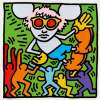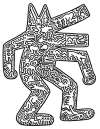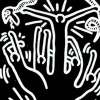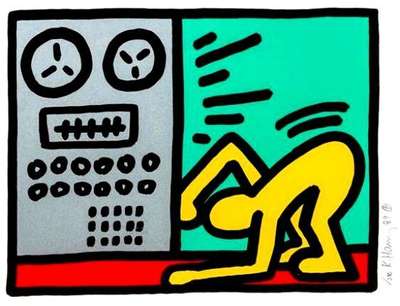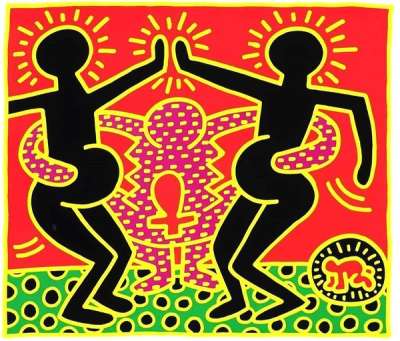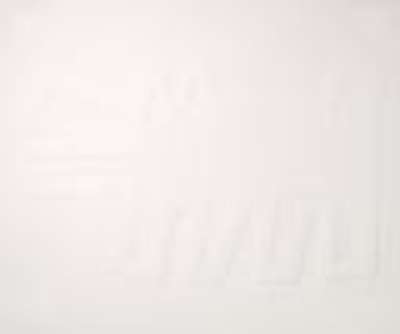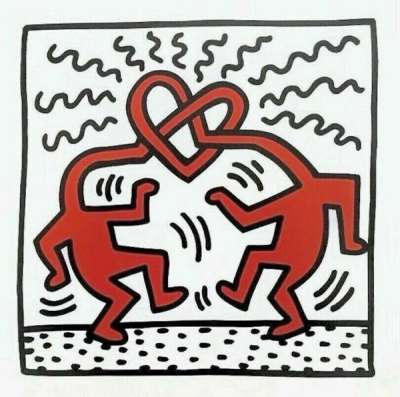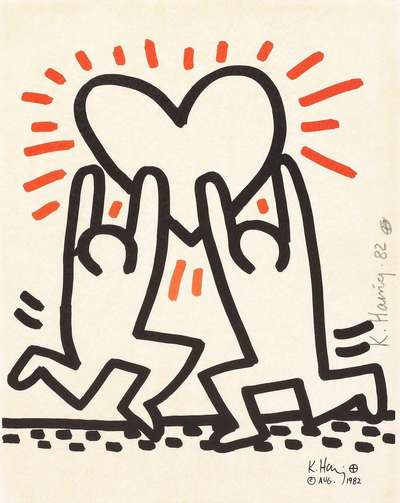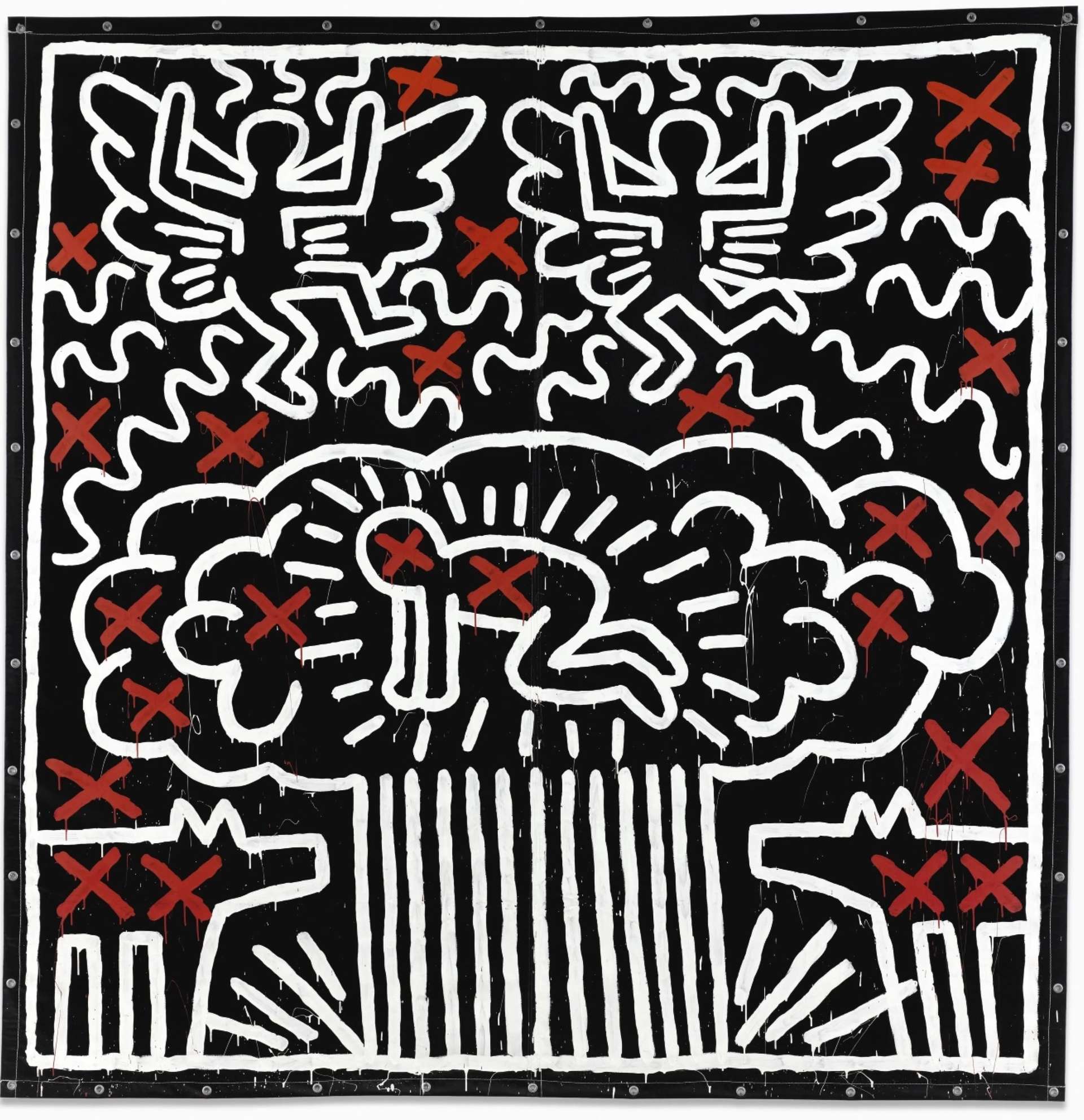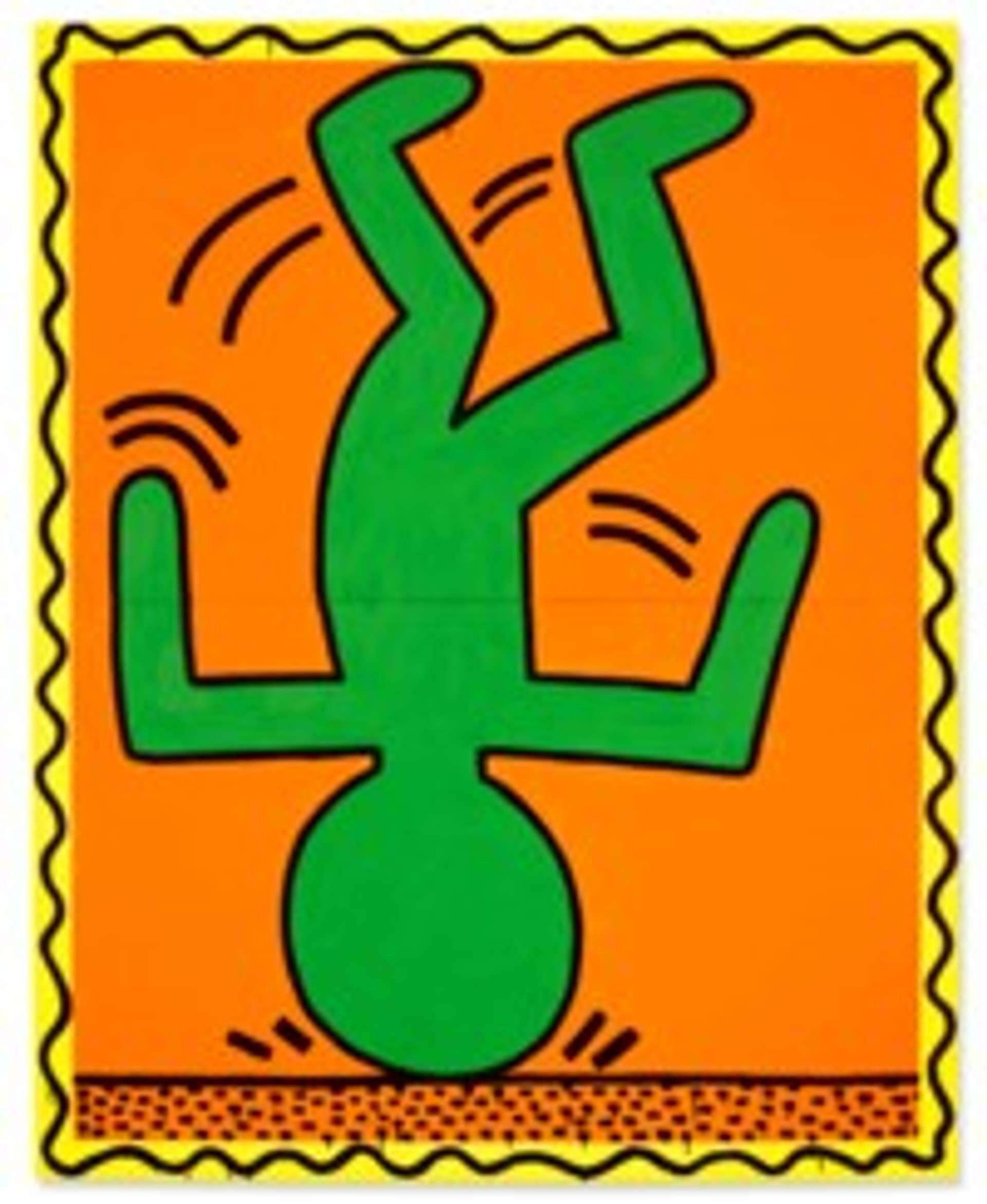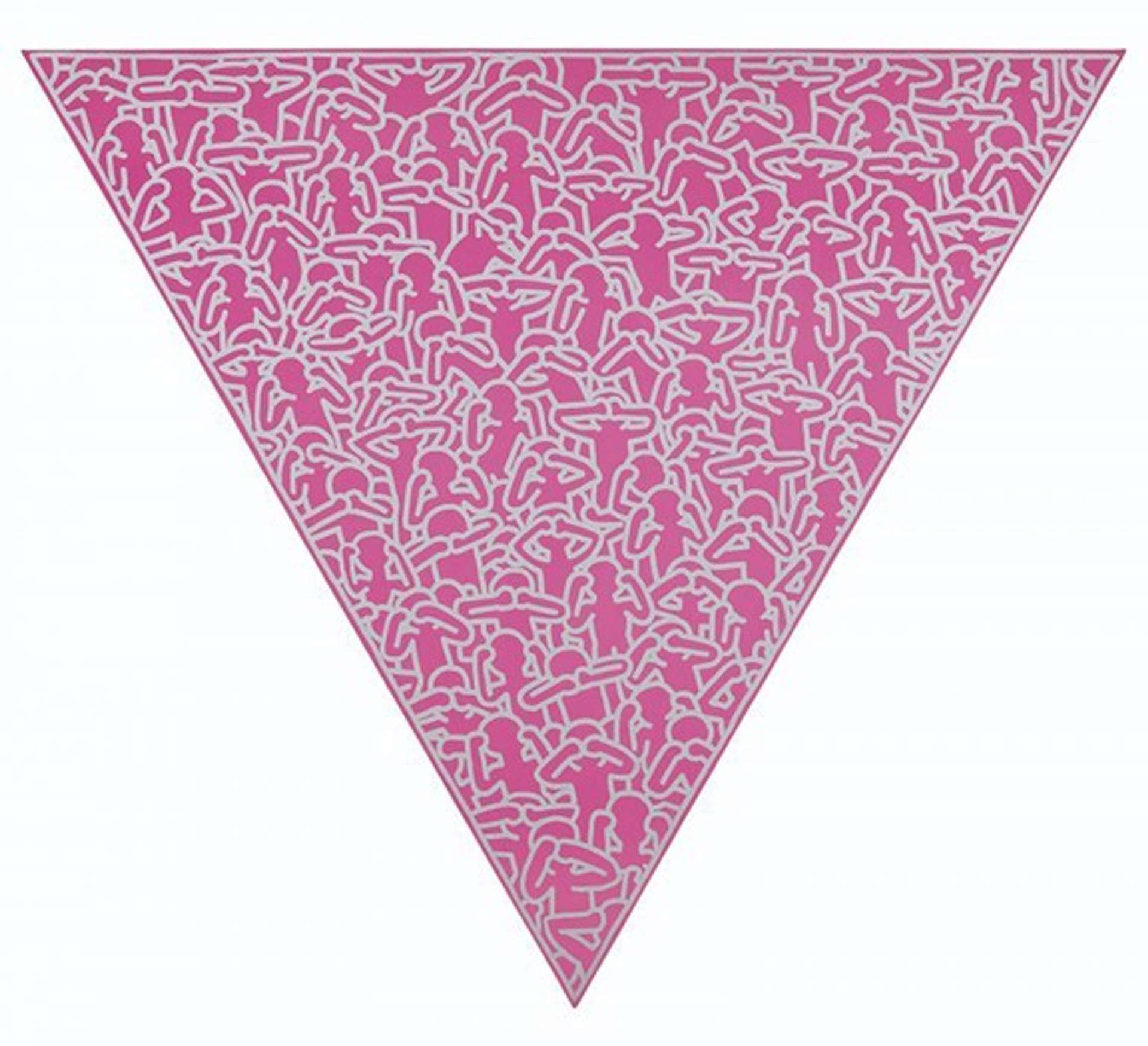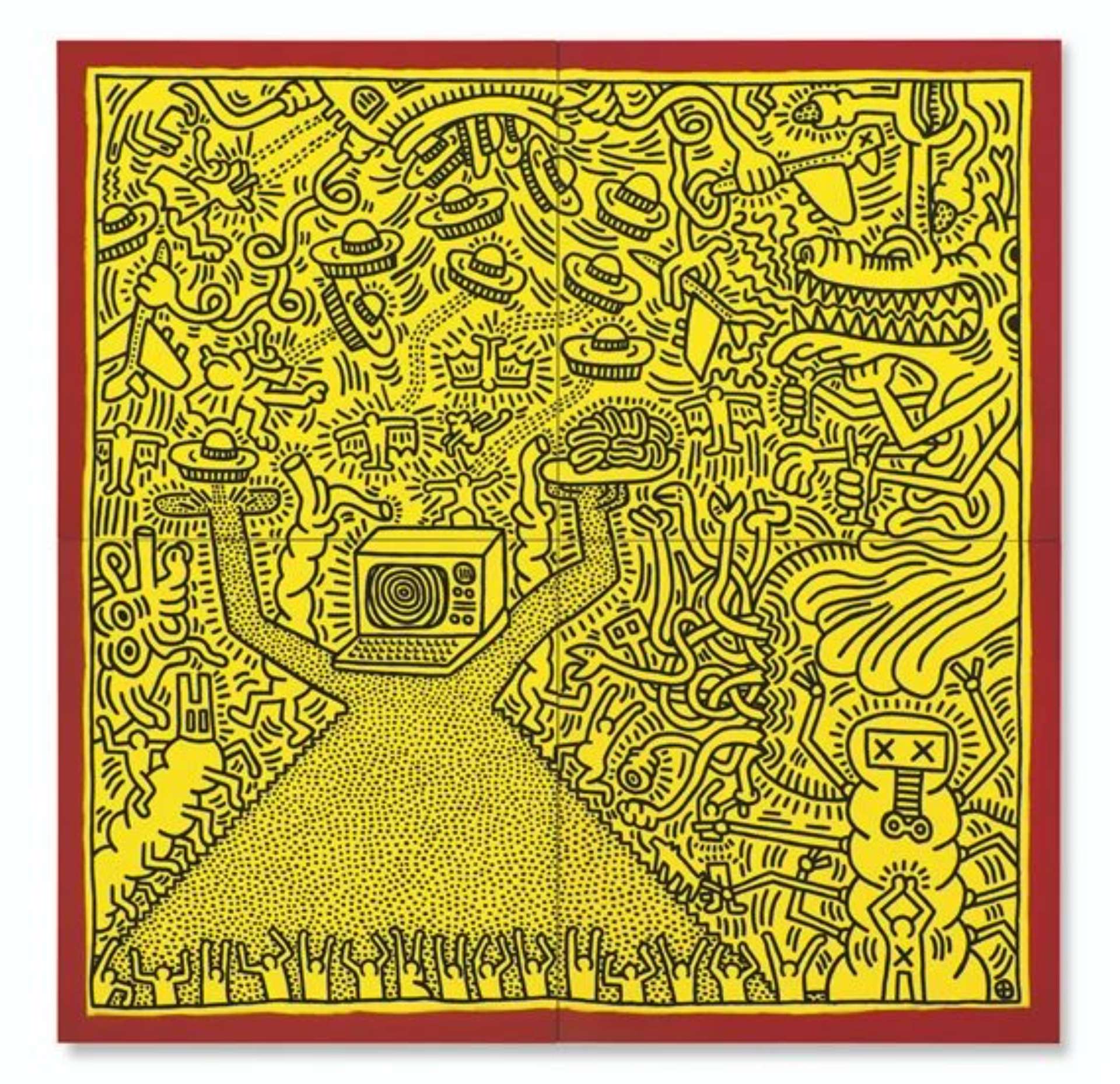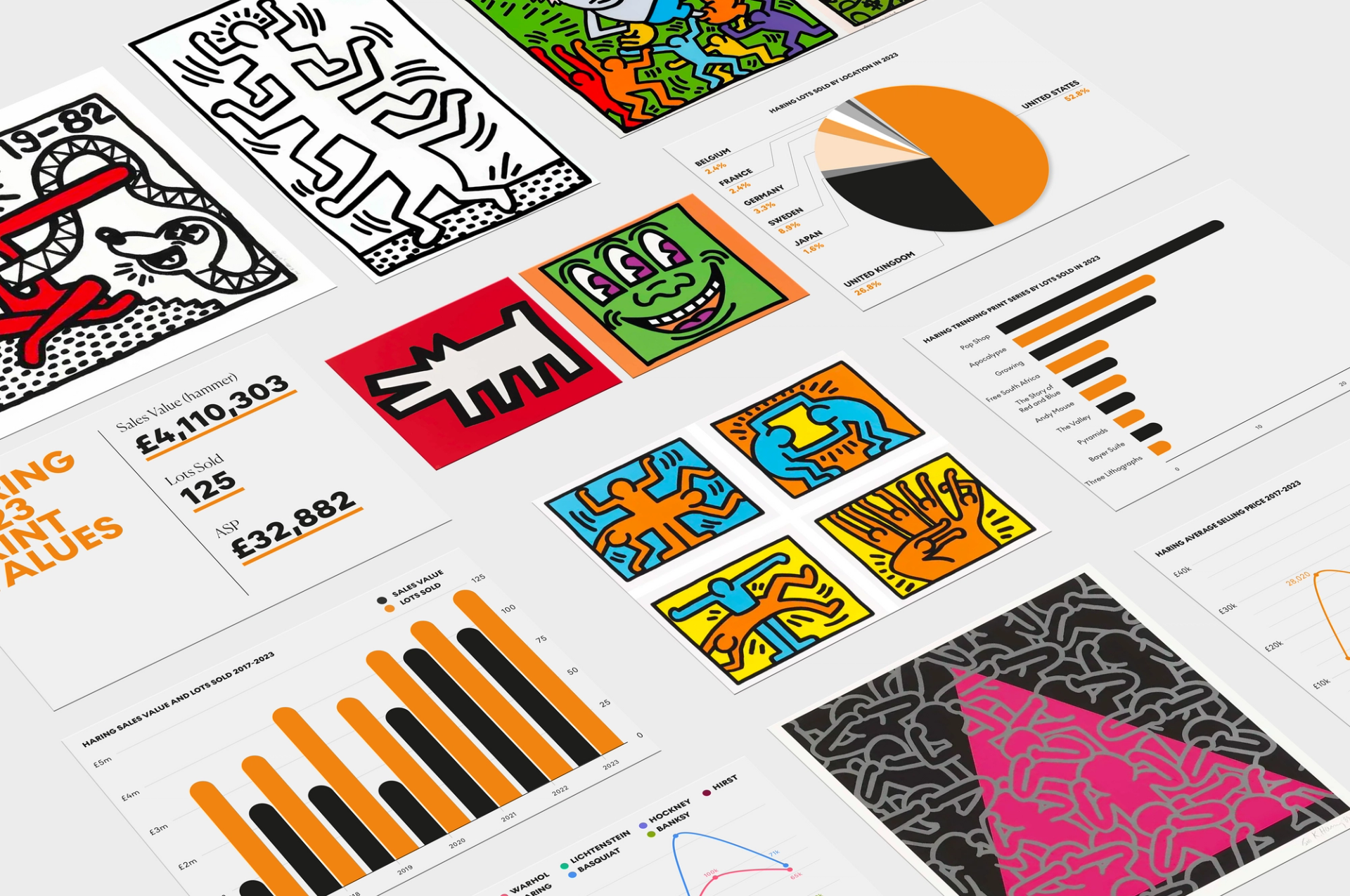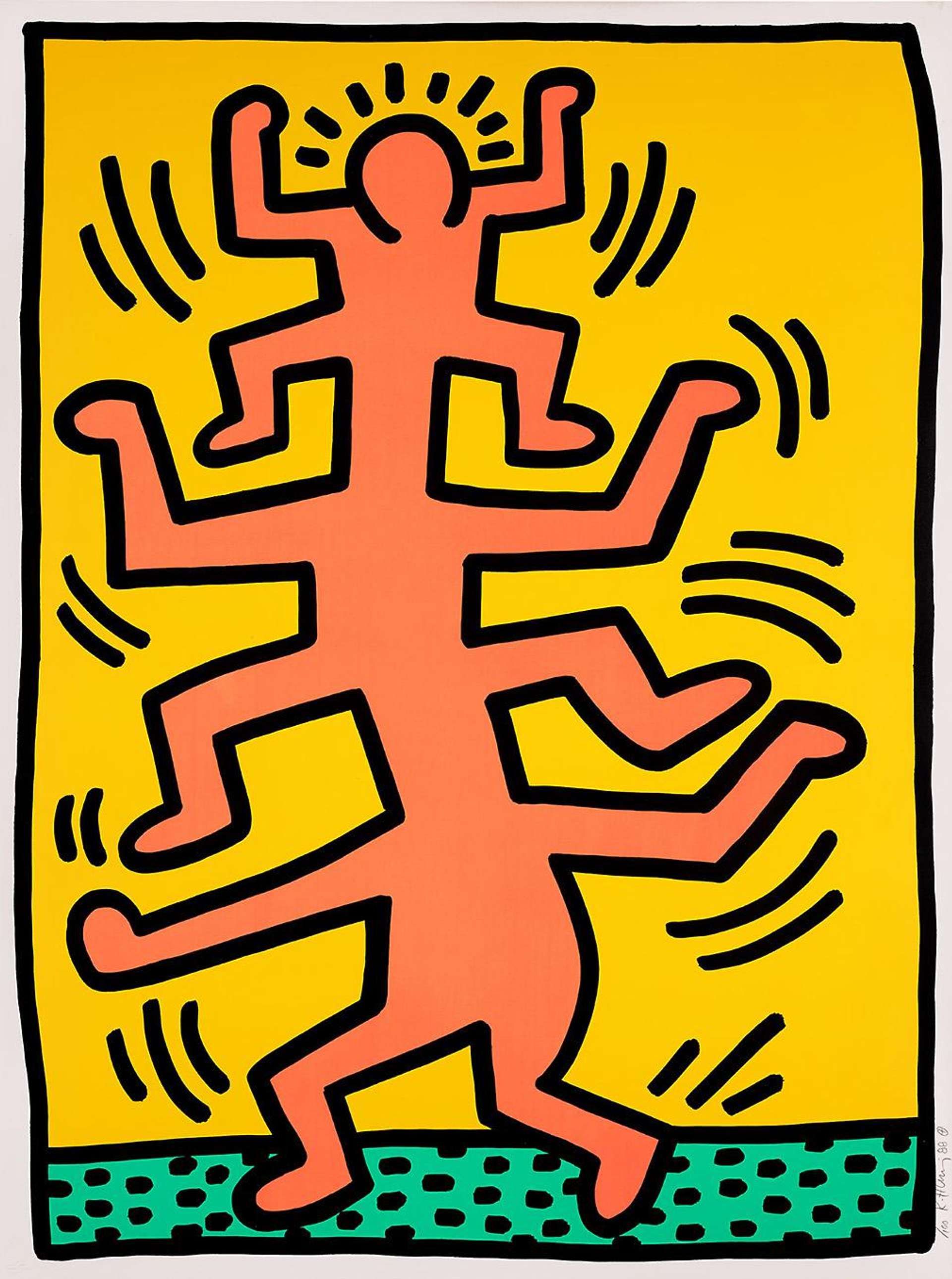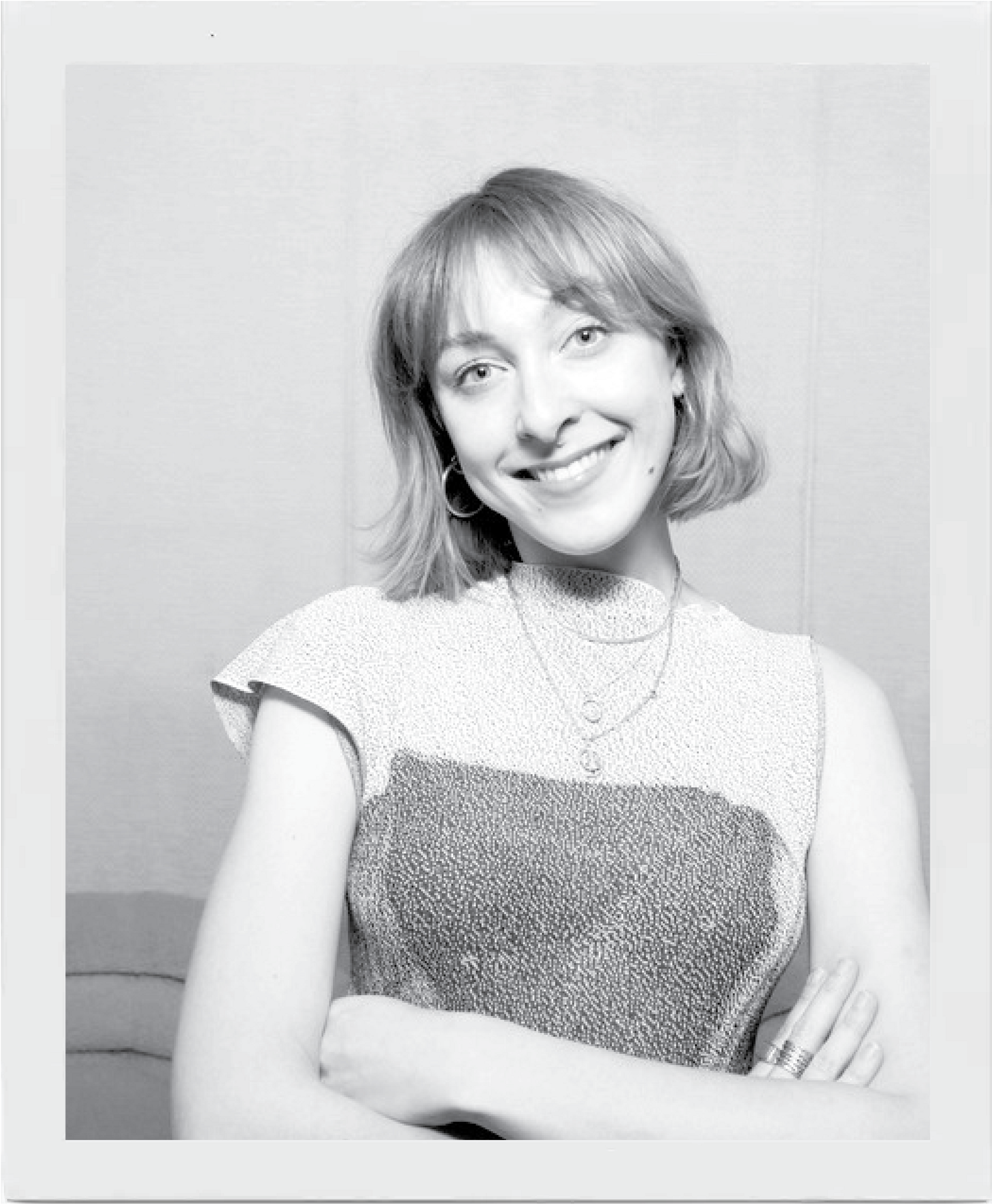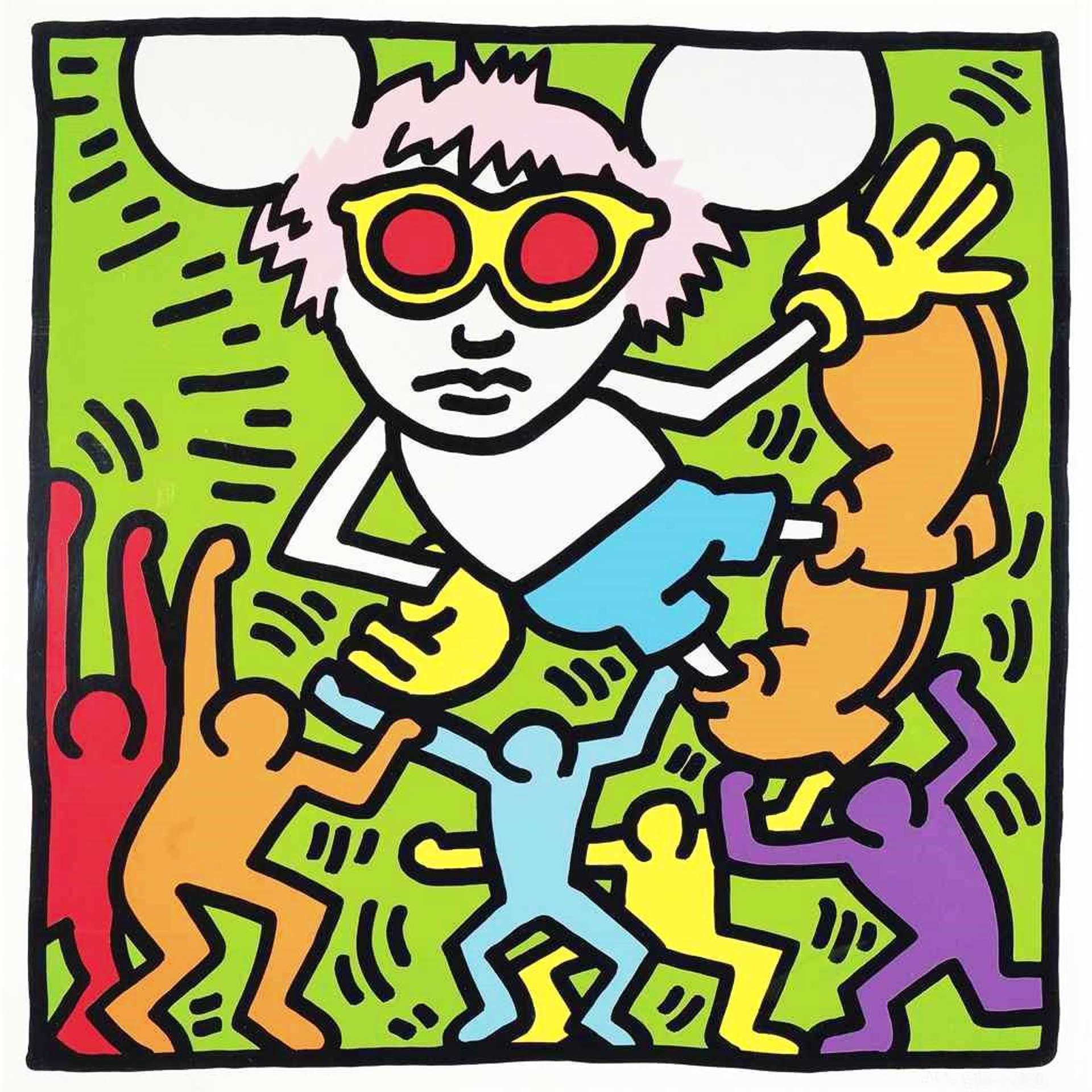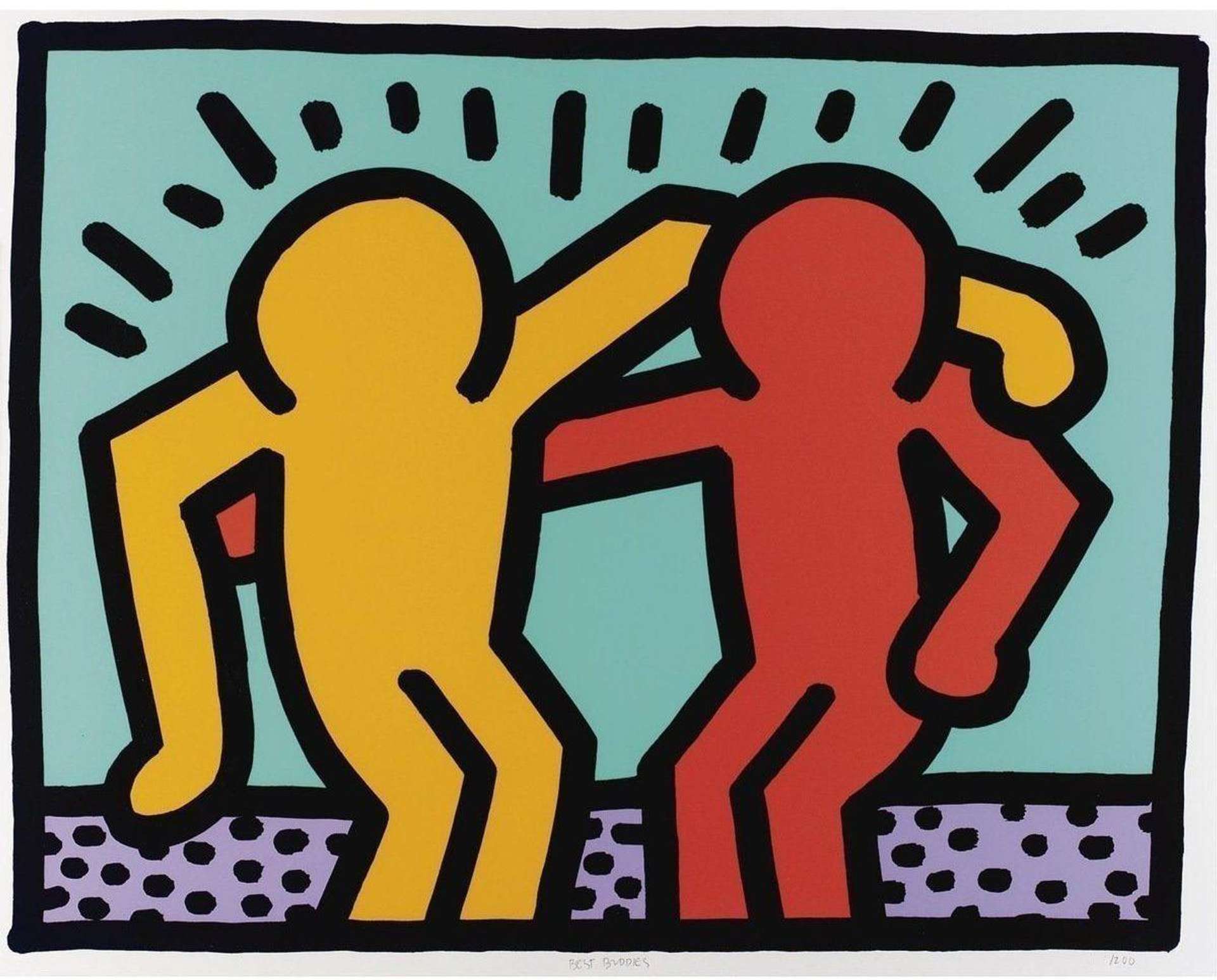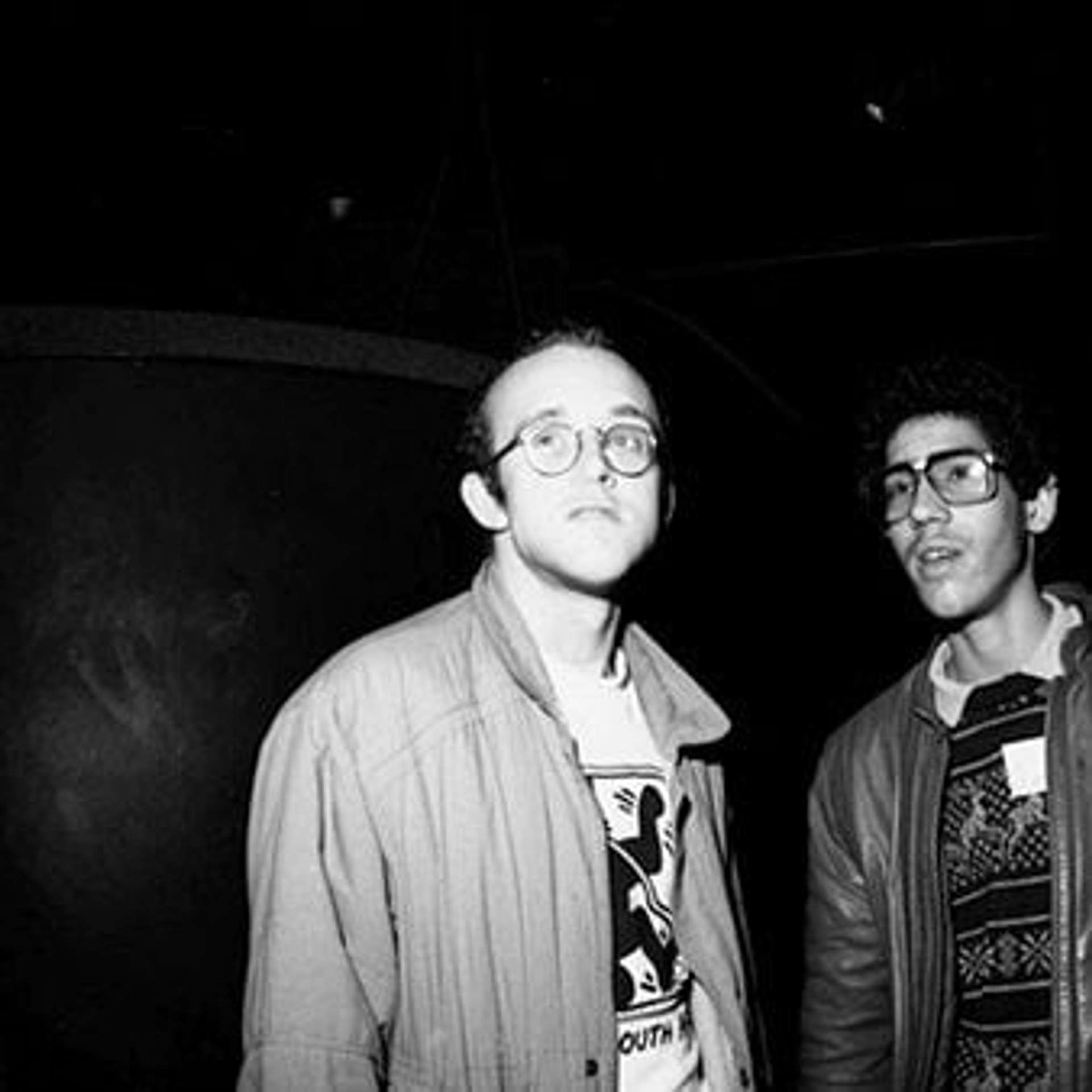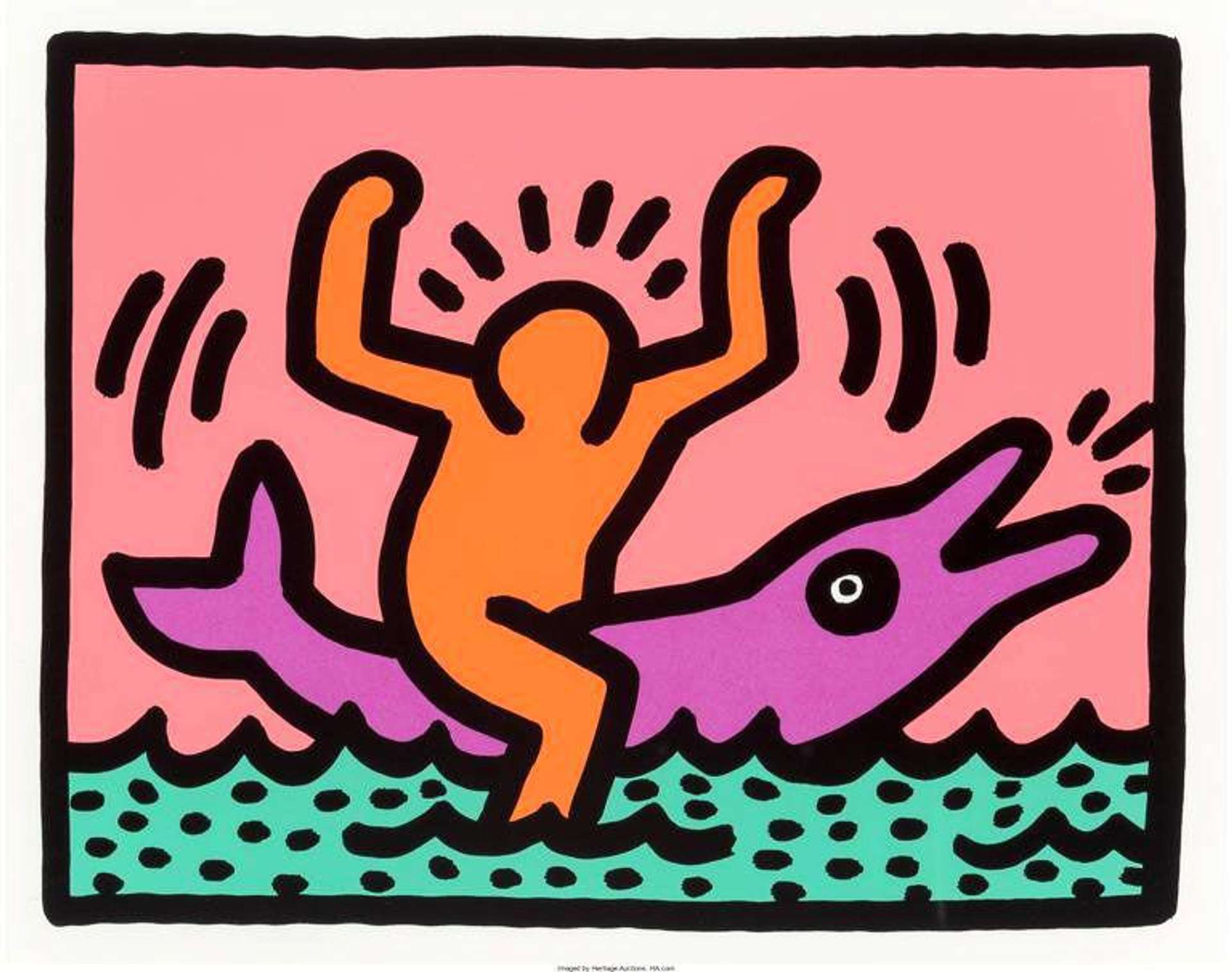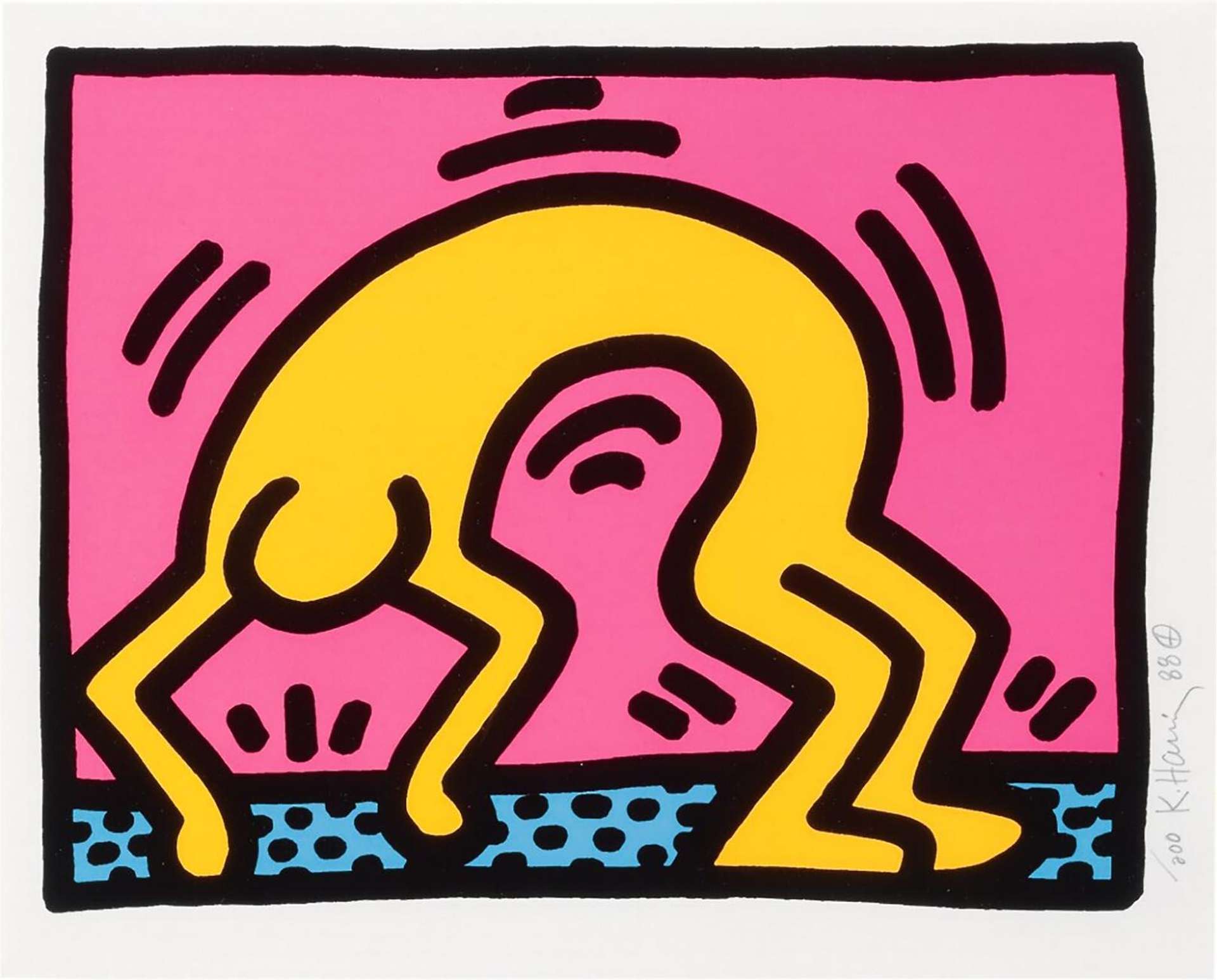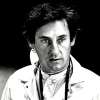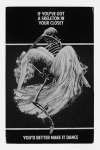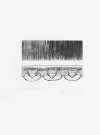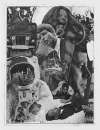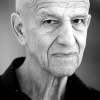Keith
Haring
Keith Haring's one-line Pop Art drawings made him a beloved fixture in 1980s New York's art-activism scene and an art history legend. If you’re looking for original Keith Haring prints and editions for sale or would like to sell, request a complimentary valuation and browse our network’s most in-demand works.
Notable series
Keith Haring prints for sale
Discover Keith Haring prints for sale, exclusively available through our private network of collectors. Explore signed and unsigned screenprints, lithographs, digital prints, and rare editioned proof prints by era-defining blue chip artists.
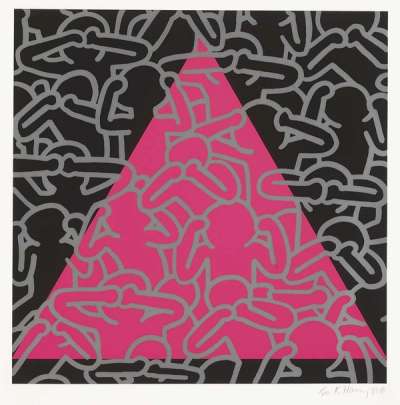
£50,000-£80,000
$100,000-$150,000 Value Indicator
$90,000-$140,000 Value Indicator
¥450,000-¥730,000 Value Indicator
€60,000-€90,000 Value Indicator
$490,000-$790,000 Value Indicator
¥9,520,000-¥15,230,000 Value Indicator
$60,000-$100,000 Value Indicator
TradingFloor
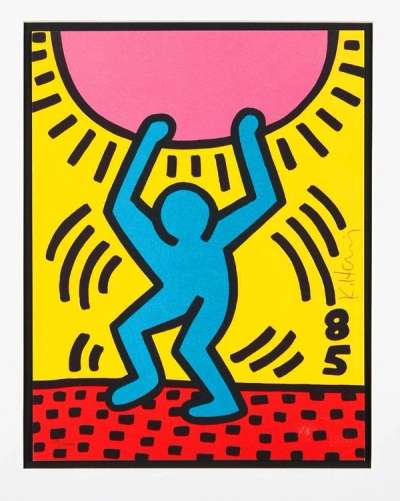
£8,000-£12,500
$15,000-$24,000 Value Indicator
$13,500-$21,000 Value Indicator
¥70,000-¥110,000 Value Indicator
€9,500-€14,500 Value Indicator
$80,000-$120,000 Value Indicator
¥1,520,000-¥2,380,000 Value Indicator
$10,000-$16,000 Value Indicator
TradingFloor
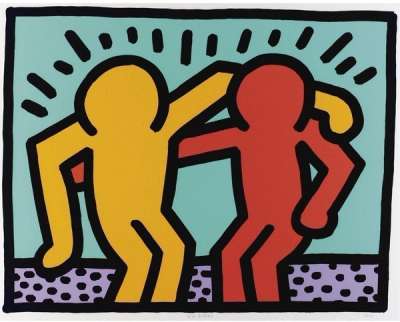
£35,000-£50,000
$70,000-$100,000 Value Indicator
$60,000-$90,000 Value Indicator
¥320,000-¥450,000 Value Indicator
€40,000-€60,000 Value Indicator
$340,000-$490,000 Value Indicator
¥6,660,000-¥9,520,000 Value Indicator
$45,000-$60,000 Value Indicator
TradingFloor
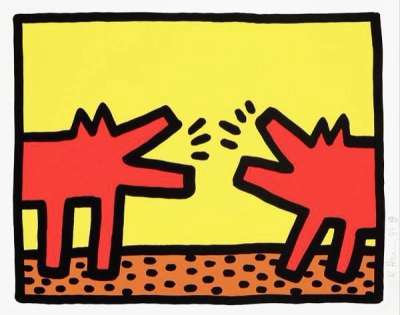
£35,000-£50,000
$70,000-$100,000 Value Indicator
$60,000-$90,000 Value Indicator
¥320,000-¥450,000 Value Indicator
€40,000-€60,000 Value Indicator
$340,000-$490,000 Value Indicator
¥6,660,000-¥9,520,000 Value Indicator
$45,000-$60,000 Value Indicator
TradingFloor
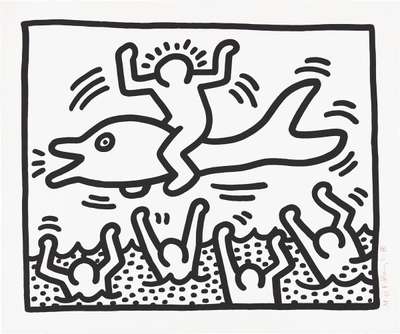
£40,000-£60,000
$80,000-$120,000 Value Indicator
$70,000-$100,000 Value Indicator
¥360,000-¥540,000 Value Indicator
€45,000-€70,000 Value Indicator
$390,000-$590,000 Value Indicator
¥7,610,000-¥11,420,000 Value Indicator
$50,000-$80,000 Value Indicator
TradingFloor
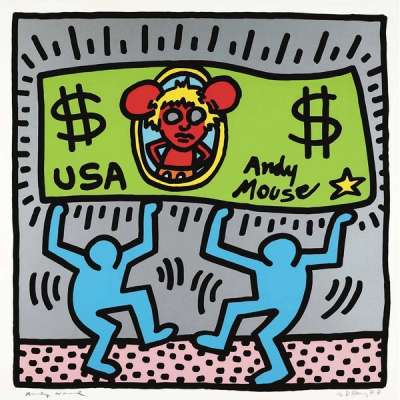
£190,000-£290,000
$370,000-$560,000 Value Indicator
$330,000-$500,000 Value Indicator
¥1,740,000-¥2,660,000 Value Indicator
€220,000-€340,000 Value Indicator
$1,890,000-$2,890,000 Value Indicator
¥35,900,000-¥54,790,000 Value Indicator
$240,000-$370,000 Value Indicator
TradingFloor
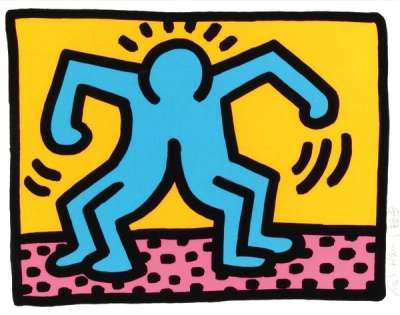
£29,000-£45,000
$60,000-$90,000 Value Indicator
$50,000-$80,000 Value Indicator
¥260,000-¥410,000 Value Indicator
€35,000-€50,000 Value Indicator
$280,000-$440,000 Value Indicator
¥5,520,000-¥8,560,000 Value Indicator
$35,000-$60,000 Value Indicator
TradingFloor
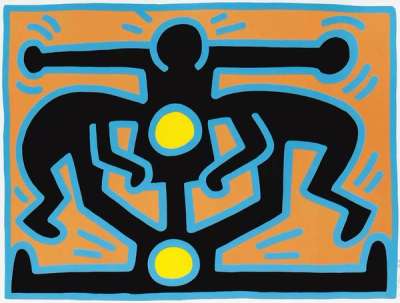
£30,000-£50,000
$60,000-$100,000 Value Indicator
$50,000-$90,000 Value Indicator
¥280,000-¥460,000 Value Indicator
€35,000-€60,000 Value Indicator
$300,000-$500,000 Value Indicator
¥5,670,000-¥9,450,000 Value Indicator
$40,000-$60,000 Value Indicator
TradingFloor
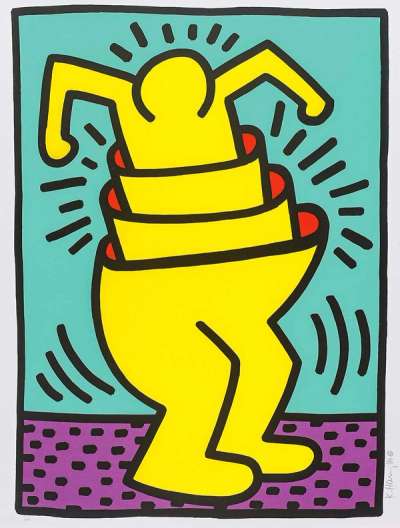
£45,000-£70,000
$90,000-$140,000 Value Indicator
$80,000-$120,000 Value Indicator
¥410,000-¥630,000 Value Indicator
€50,000-€80,000 Value Indicator
$440,000-$690,000 Value Indicator
¥8,560,000-¥13,320,000 Value Indicator
$60,000-$90,000 Value Indicator
TradingFloor
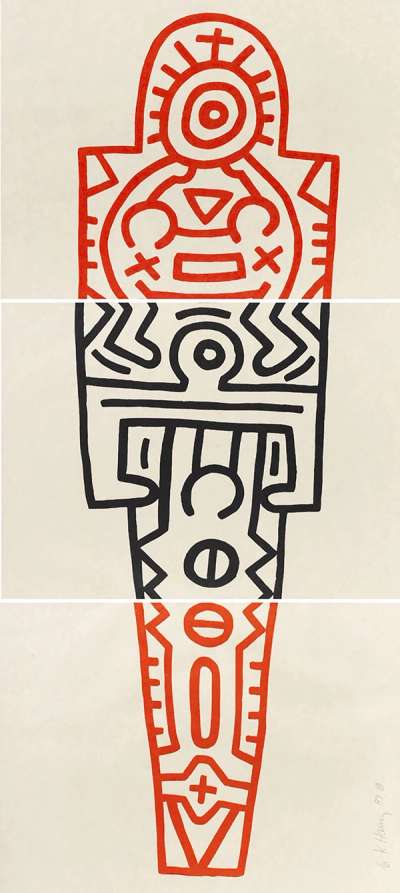
£45,000-£70,000
$90,000-$140,000 Value Indicator
$80,000-$120,000 Value Indicator
¥410,000-¥640,000 Value Indicator
€50,000-€80,000 Value Indicator
$450,000-$700,000 Value Indicator
¥8,500,000-¥13,230,000 Value Indicator
$60,000-$90,000 Value Indicator
TradingFloor
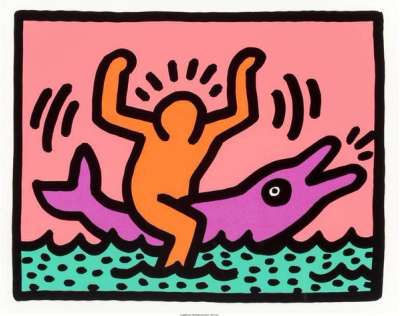
£11,500-£18,000
$22,000-$35,000 Value Indicator
$20,000-$30,000 Value Indicator
¥100,000-¥160,000 Value Indicator
€13,500-€21,000 Value Indicator
$110,000-$180,000 Value Indicator
¥2,190,000-¥3,430,000 Value Indicator
$14,500-$23,000 Value Indicator
TradingFloor
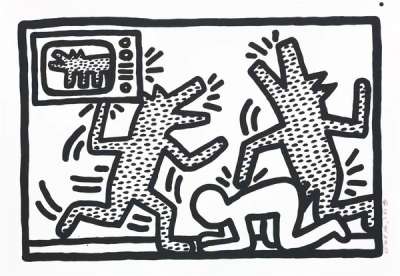
£25,000-£40,000
$50,000-$80,000 Value Indicator
$45,000-$70,000 Value Indicator
¥230,000-¥360,000 Value Indicator
€29,000-€45,000 Value Indicator
$250,000-$390,000 Value Indicator
¥4,760,000-¥7,610,000 Value Indicator
$30,000-$50,000 Value Indicator
TradingFloor
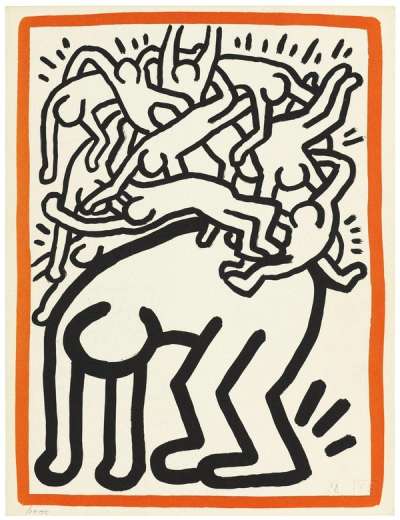
£2,000-£2,950
$3,850-$5,500 Value Indicator
$3,400-$5,000 Value Indicator
¥18,000-¥27,000 Value Indicator
€2,350-€3,450 Value Indicator
$20,000-$29,000 Value Indicator
¥380,000-¥560,000 Value Indicator
$2,500-$3,700 Value Indicator
TradingFloor
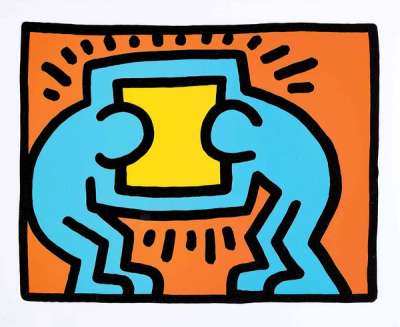
£11,500-£17,000
$22,000-$35,000 Value Indicator
$20,000-$29,000 Value Indicator
¥100,000-¥150,000 Value Indicator
€13,500-€20,000 Value Indicator
$110,000-$170,000 Value Indicator
¥2,190,000-¥3,240,000 Value Indicator
$14,500-$21,000 Value Indicator
TradingFloor
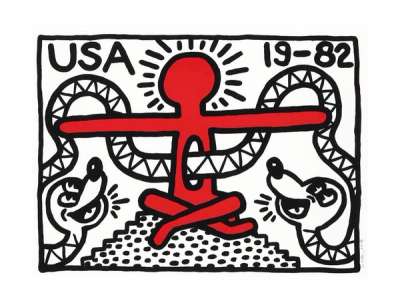
£27,000-£40,000
$50,000-$80,000 Value Indicator
$45,000-$70,000 Value Indicator
¥250,000-¥370,000 Value Indicator
€30,000-€45,000 Value Indicator
$270,000-$400,000 Value Indicator
¥5,100,000-¥7,560,000 Value Indicator
$35,000-$50,000 Value Indicator
TradingFloor
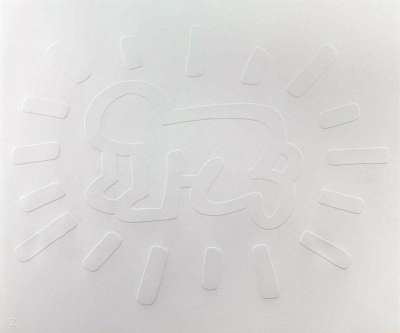
£10,500-£16,000
$20,000-$30,000 Value Indicator
$18,000-$27,000 Value Indicator
¥100,000-¥150,000 Value Indicator
€12,500-€19,000 Value Indicator
$100,000-$160,000 Value Indicator
¥2,000,000-¥3,050,000 Value Indicator
$13,000-$20,000 Value Indicator
TradingFloor
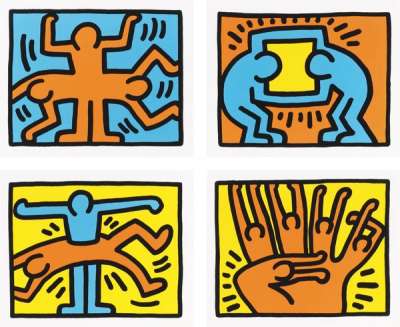
£40,000-£60,000
$80,000-$120,000 Value Indicator
$70,000-$100,000 Value Indicator
¥370,000-¥550,000 Value Indicator
€45,000-€70,000 Value Indicator
$400,000-$590,000 Value Indicator
¥7,650,000-¥11,470,000 Value Indicator
$50,000-$80,000 Value Indicator
TradingFloor
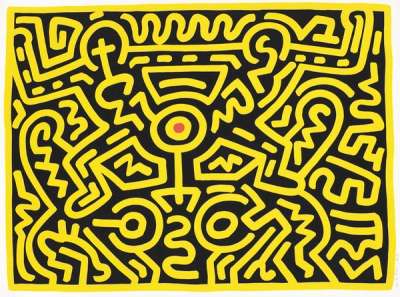
£35,000-£50,000
$70,000-$100,000 Value Indicator
$60,000-$90,000 Value Indicator
¥320,000-¥450,000 Value Indicator
€40,000-€60,000 Value Indicator
$340,000-$490,000 Value Indicator
¥6,660,000-¥9,520,000 Value Indicator
$45,000-$60,000 Value Indicator
TradingFloor
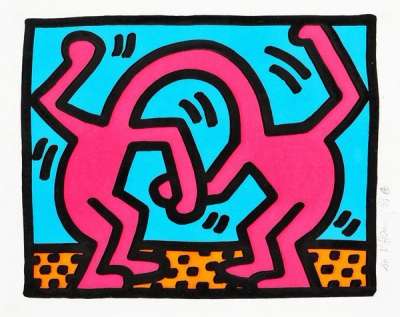
£20,000-£30,000
$40,000-$60,000 Value Indicator
$35,000-$50,000 Value Indicator
¥180,000-¥270,000 Value Indicator
€23,000-€35,000 Value Indicator
$200,000-$290,000 Value Indicator
¥3,810,000-¥5,710,000 Value Indicator
$25,000-$40,000 Value Indicator
TradingFloor
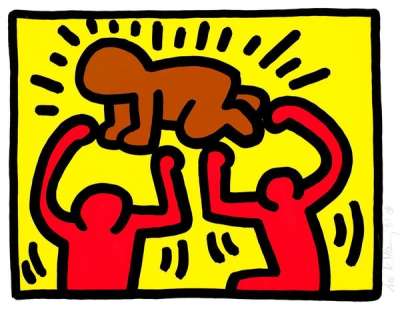
£24,000-£35,000
$45,000-$70,000 Value Indicator
$40,000-$60,000 Value Indicator
¥220,000-¥320,000 Value Indicator
€28,000-€40,000 Value Indicator
$240,000-$340,000 Value Indicator
¥4,570,000-¥6,660,000 Value Indicator
$30,000-$45,000 Value Indicator
TradingFloor
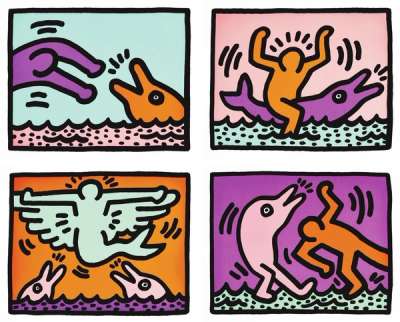
£40,000-£60,000
$80,000-$120,000 Value Indicator
$70,000-$100,000 Value Indicator
¥370,000-¥550,000 Value Indicator
€45,000-€70,000 Value Indicator
$400,000-$600,000 Value Indicator
¥7,600,000-¥11,400,000 Value Indicator
$50,000-$80,000 Value Indicator
TradingFloor
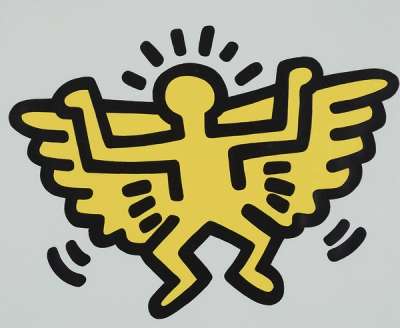
£14,000-£21,000
$27,000-$40,000 Value Indicator
$24,000-$35,000 Value Indicator
¥130,000-¥190,000 Value Indicator
€16,000-€25,000 Value Indicator
$140,000-$210,000 Value Indicator
¥2,670,000-¥4,010,000 Value Indicator
$18,000-$27,000 Value Indicator
TradingFloor
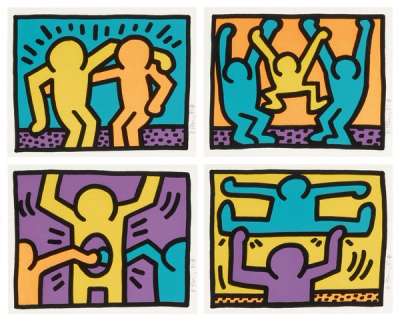
£90,000-£140,000
$170,000-$270,000 Value Indicator
$160,000-$240,000 Value Indicator
¥830,000-¥1,280,000 Value Indicator
€110,000-€160,000 Value Indicator
$900,000-$1,400,000 Value Indicator
¥17,000,000-¥26,450,000 Value Indicator
$110,000-$180,000 Value Indicator
TradingFloor
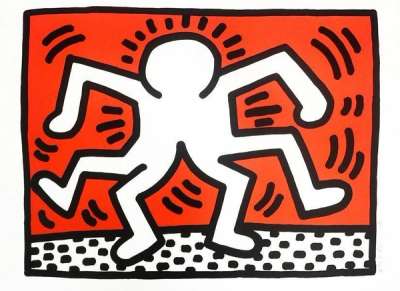
£25,000-£35,000
$50,000-$70,000 Value Indicator
$45,000-$60,000 Value Indicator
¥230,000-¥320,000 Value Indicator
€29,000-€40,000 Value Indicator
$250,000-$350,000 Value Indicator
¥4,720,000-¥6,610,000 Value Indicator
$30,000-$45,000 Value Indicator
TradingFloor
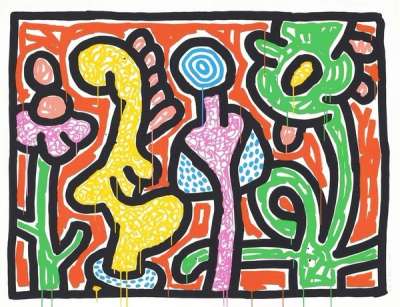
£20,000-£30,000
$40,000-$60,000 Value Indicator
$35,000-$50,000 Value Indicator
¥180,000-¥280,000 Value Indicator
€23,000-€35,000 Value Indicator
$200,000-$300,000 Value Indicator
¥3,780,000-¥5,670,000 Value Indicator
$25,000-$40,000 Value Indicator
TradingFloor
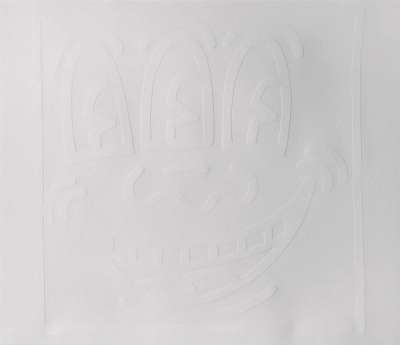
£8,500-£12,500
$16,000-$24,000 Value Indicator
$14,500-$21,000 Value Indicator
¥80,000-¥110,000 Value Indicator
€10,000-€14,500 Value Indicator
$80,000-$120,000 Value Indicator
¥1,620,000-¥2,380,000 Value Indicator
$10,500-$16,000 Value Indicator
TradingFloor
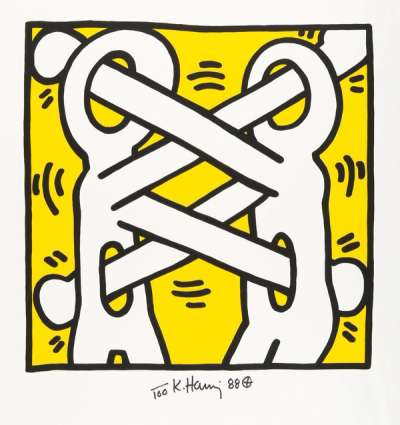
£2,050-£3,050
$3,950-$6,000 Value Indicator
$3,550-$5,500 Value Indicator
¥19,000-¥28,000 Value Indicator
€2,400-€3,550 Value Indicator
$20,000-$30,000 Value Indicator
¥390,000-¥580,000 Value Indicator
$2,600-$3,900 Value Indicator
TradingFloor
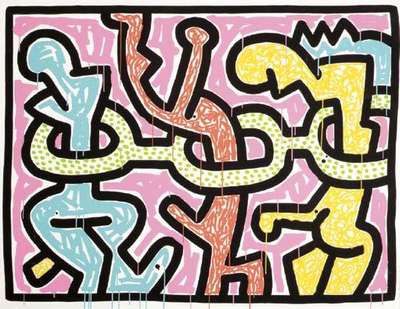
£18,000-£27,000
$35,000-$50,000 Value Indicator
$30,000-$45,000 Value Indicator
¥170,000-¥250,000 Value Indicator
€21,000-€30,000 Value Indicator
$180,000-$270,000 Value Indicator
¥3,400,000-¥5,100,000 Value Indicator
$23,000-$35,000 Value Indicator
TradingFloor
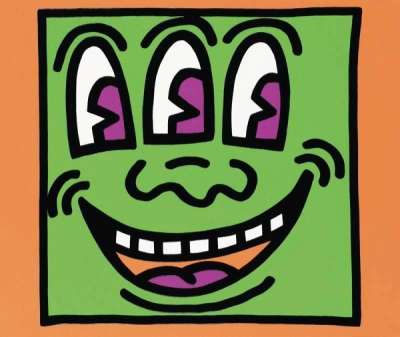
£10,000-£15,000
$19,000-$29,000 Value Indicator
$17,000-$26,000 Value Indicator
¥90,000-¥140,000 Value Indicator
€11,500-€18,000 Value Indicator
$100,000-$150,000 Value Indicator
¥1,890,000-¥2,830,000 Value Indicator
$12,500-$19,000 Value Indicator
TradingFloor
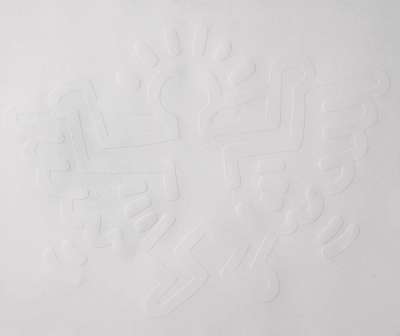
£11,500-£17,000
$22,000-$35,000 Value Indicator
$20,000-$29,000 Value Indicator
¥100,000-¥150,000 Value Indicator
€13,500-€20,000 Value Indicator
$110,000-$170,000 Value Indicator
¥2,190,000-¥3,240,000 Value Indicator
$14,500-$21,000 Value Indicator
TradingFloor
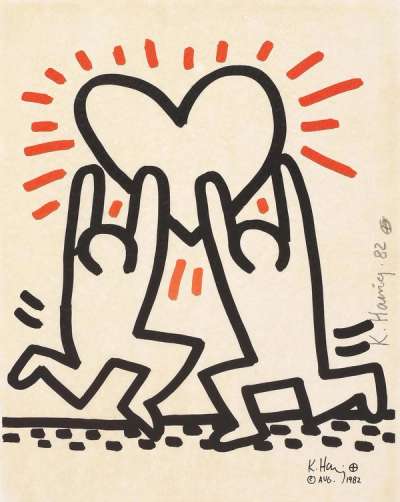
£11,500-£17,000
$22,000-$35,000 Value Indicator
$20,000-$29,000 Value Indicator
¥100,000-¥150,000 Value Indicator
€13,500-€20,000 Value Indicator
$110,000-$170,000 Value Indicator
¥2,190,000-¥3,240,000 Value Indicator
$14,500-$21,000 Value Indicator
TradingFloor
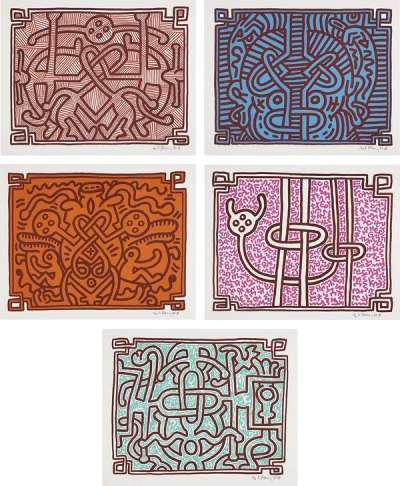
£50,000-£80,000
$100,000-$150,000 Value Indicator
$90,000-$140,000 Value Indicator
¥450,000-¥730,000 Value Indicator
€60,000-€90,000 Value Indicator
$490,000-$790,000 Value Indicator
¥9,520,000-¥15,230,000 Value Indicator
$60,000-$100,000 Value Indicator
TradingFloor
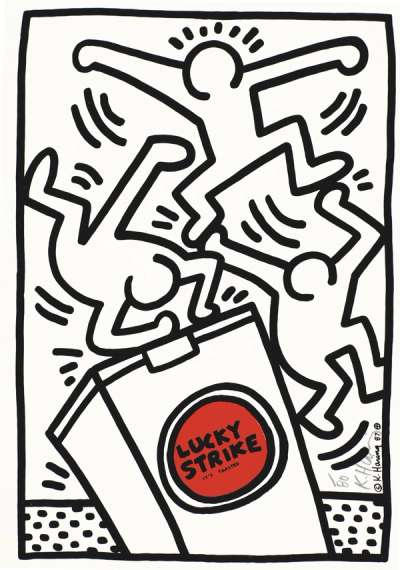
£10,500-£16,000
$20,000-$30,000 Value Indicator
$18,000-$28,000 Value Indicator
¥100,000-¥150,000 Value Indicator
€12,500-€19,000 Value Indicator
$100,000-$160,000 Value Indicator
¥1,980,000-¥3,020,000 Value Indicator
$13,500-$20,000 Value Indicator
TradingFloor
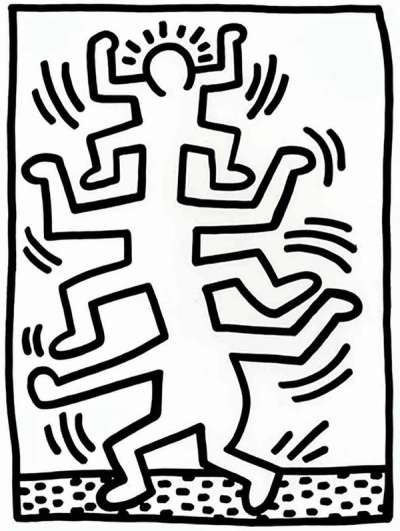
£90,000-£130,000
$170,000-$250,000 Value Indicator
$150,000-$220,000 Value Indicator
¥820,000-¥1,180,000 Value Indicator
€110,000-€150,000 Value Indicator
$880,000-$1,280,000 Value Indicator
¥17,130,000-¥24,740,000 Value Indicator
$110,000-$160,000 Value Indicator
TradingFloor
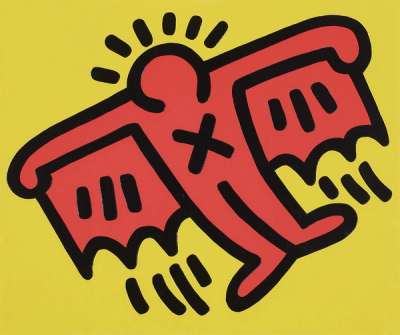
£10,000-£15,000
$19,000-$29,000 Value Indicator
$17,000-$26,000 Value Indicator
¥90,000-¥140,000 Value Indicator
€11,500-€18,000 Value Indicator
$100,000-$150,000 Value Indicator
¥1,890,000-¥2,830,000 Value Indicator
$12,500-$19,000 Value Indicator
TradingFloor
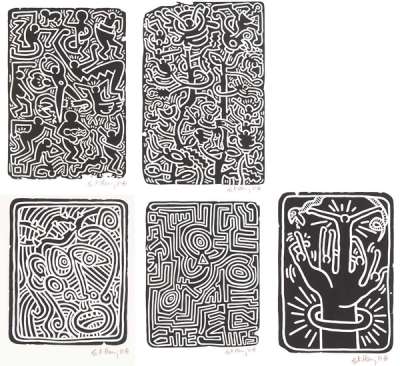
£70,000-£100,000
$140,000-$190,000 Value Indicator
$120,000-$170,000 Value Indicator
¥640,000-¥910,000 Value Indicator
€80,000-€120,000 Value Indicator
$700,000-$990,000 Value Indicator
¥13,370,000-¥19,110,000 Value Indicator
$90,000-$130,000 Value Indicator
TradingFloor
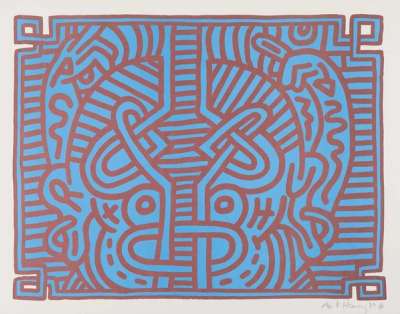
£17,000-£25,000
$35,000-$50,000 Value Indicator
$29,000-$45,000 Value Indicator
¥150,000-¥230,000 Value Indicator
€20,000-€29,000 Value Indicator
$170,000-$250,000 Value Indicator
¥3,240,000-¥4,760,000 Value Indicator
$21,000-$30,000 Value Indicator
TradingFloor
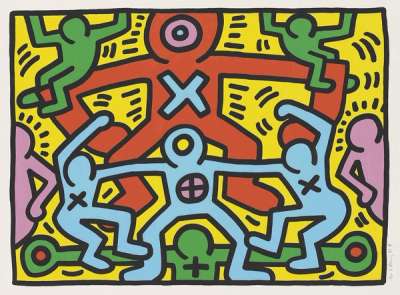
£28,000-£40,000
$50,000-$80,000 Value Indicator
$50,000-$70,000 Value Indicator
¥260,000-¥370,000 Value Indicator
€35,000-€45,000 Value Indicator
$280,000-$400,000 Value Indicator
¥5,290,000-¥7,560,000 Value Indicator
$35,000-$50,000 Value Indicator
TradingFloor

£70,000-£100,000
$140,000-$190,000 Value Indicator
$120,000-$170,000 Value Indicator
¥630,000-¥900,000 Value Indicator
€80,000-€120,000 Value Indicator
$690,000-$980,000 Value Indicator
¥13,220,000-¥18,890,000 Value Indicator
$90,000-$130,000 Value Indicator
TradingFloor
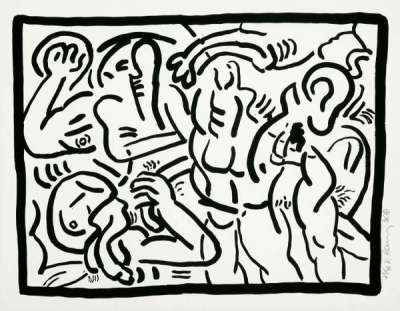
£6,000-£8,500
$11,500-$16,000 Value Indicator
$10,500-$14,500 Value Indicator
¥50,000-¥80,000 Value Indicator
€7,000-€10,000 Value Indicator
$60,000-$80,000 Value Indicator
¥1,150,000-¥1,630,000 Value Indicator
$7,500-$11,000 Value Indicator
TradingFloor
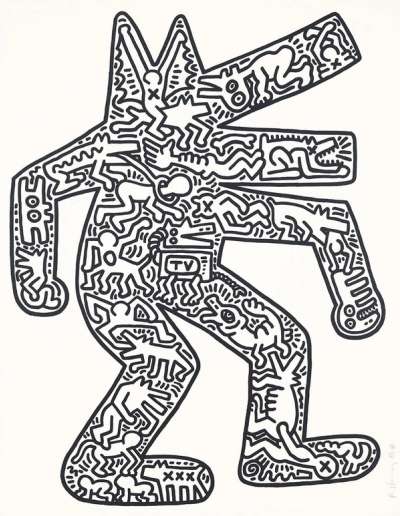
£60,000-£90,000
$120,000-$170,000 Value Indicator
$100,000-$150,000 Value Indicator
¥540,000-¥820,000 Value Indicator
€70,000-€110,000 Value Indicator
$590,000-$880,000 Value Indicator
¥11,420,000-¥17,130,000 Value Indicator
$80,000-$110,000 Value Indicator
TradingFloor
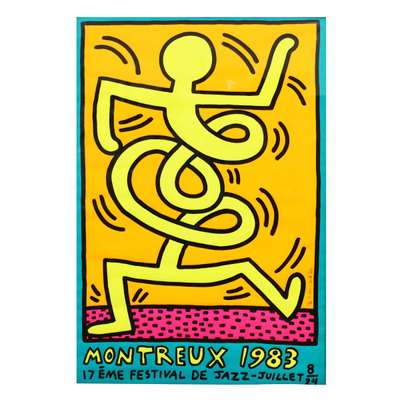
£1,300-£1,950
$2,500-$3,750 Value Indicator
$2,200-$3,300 Value Indicator
¥12,000-¥18,000 Value Indicator
€1,500-€2,300 Value Indicator
$13,000-$19,000 Value Indicator
¥250,000-¥370,000 Value Indicator
$1,650-$2,450 Value Indicator
TradingFloor
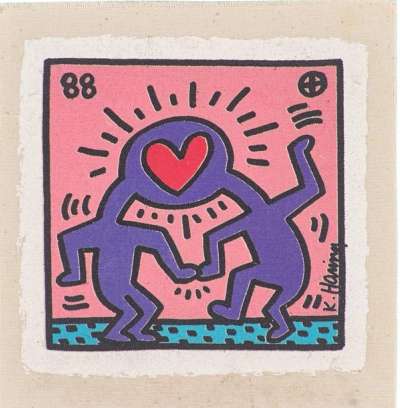
£6,500-£9,500
$12,500-$19,000 Value Indicator
$11,000-$16,000 Value Indicator
¥60,000-¥90,000 Value Indicator
€7,500-€11,000 Value Indicator
$60,000-$90,000 Value Indicator
¥1,240,000-¥1,810,000 Value Indicator
$8,500-$12,000 Value Indicator
TradingFloor
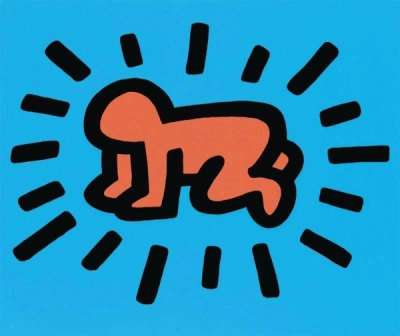
£19,000-£29,000
$35,000-$60,000 Value Indicator
$30,000-$50,000 Value Indicator
¥170,000-¥260,000 Value Indicator
€22,000-€35,000 Value Indicator
$190,000-$280,000 Value Indicator
¥3,620,000-¥5,520,000 Value Indicator
$24,000-$35,000 Value Indicator
TradingFloor
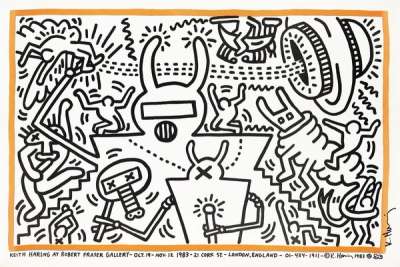
£4,050-£6,000
$8,000-$11,500 Value Indicator
$7,000-$10,500 Value Indicator
¥35,000-¥60,000 Value Indicator
€4,750-€7,000 Value Indicator
$40,000-$60,000 Value Indicator
¥770,000-¥1,130,000 Value Indicator
$5,000-$7,500 Value Indicator
TradingFloor
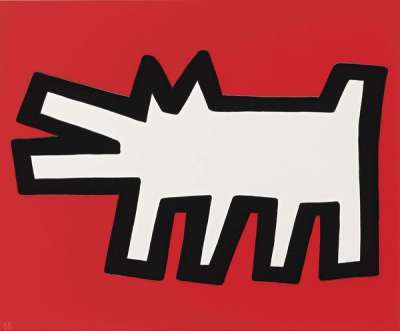
£17,000-£26,000
$35,000-$50,000 Value Indicator
$29,000-$45,000 Value Indicator
¥150,000-¥240,000 Value Indicator
€20,000-€30,000 Value Indicator
$170,000-$260,000 Value Indicator
¥3,240,000-¥4,950,000 Value Indicator
$21,000-$35,000 Value Indicator
TradingFloor
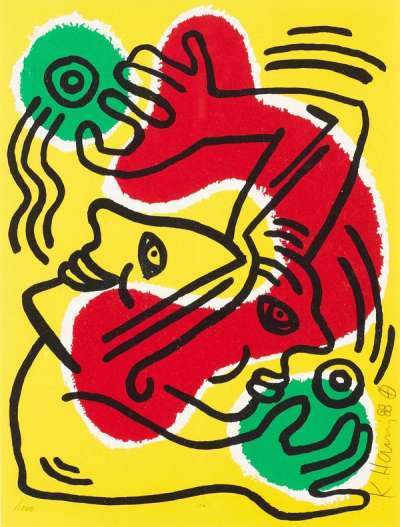
£5,000-£8,000
$9,500-$15,000 Value Indicator
$8,500-$13,500 Value Indicator
¥45,000-¥70,000 Value Indicator
€6,000-€9,500 Value Indicator
$50,000-$80,000 Value Indicator
¥950,000-¥1,520,000 Value Indicator
$6,500-$10,000 Value Indicator
TradingFloor
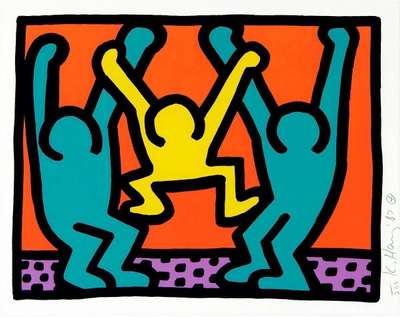
£20,000-£30,000
$40,000-$60,000 Value Indicator
$35,000-$50,000 Value Indicator
¥180,000-¥280,000 Value Indicator
€23,000-€35,000 Value Indicator
$200,000-$300,000 Value Indicator
¥3,780,000-¥5,670,000 Value Indicator
$25,000-$40,000 Value Indicator
TradingFloor
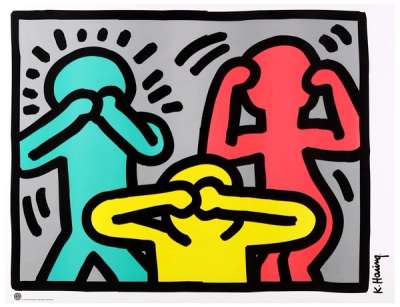
£9,000-£13,500
$17,000-$26,000 Value Indicator
$15,000-$23,000 Value Indicator
¥80,000-¥120,000 Value Indicator
€10,500-€16,000 Value Indicator
$90,000-$130,000 Value Indicator
¥1,720,000-¥2,580,000 Value Indicator
$11,500-$17,000 Value Indicator
TradingFloor
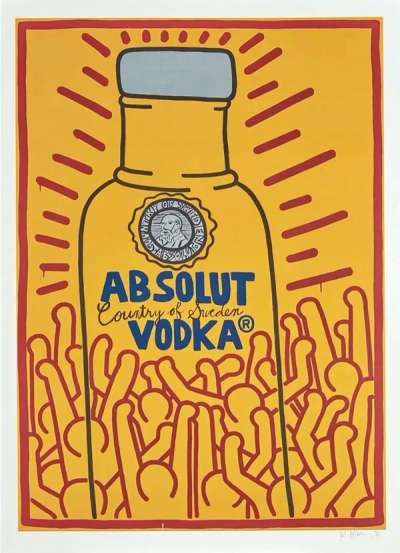
£16,000-£23,000
$30,000-$45,000 Value Indicator
$28,000-$40,000 Value Indicator
¥150,000-¥210,000 Value Indicator
€19,000-€27,000 Value Indicator
$160,000-$230,000 Value Indicator
¥3,030,000-¥4,360,000 Value Indicator
$20,000-$29,000 Value Indicator
TradingFloor
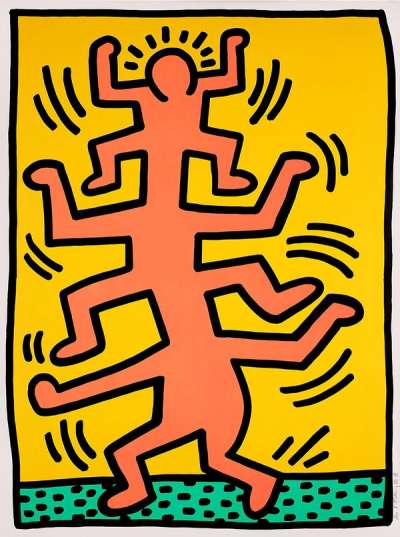
£40,000-£60,000
$80,000-$120,000 Value Indicator
$70,000-$100,000 Value Indicator
¥370,000-¥550,000 Value Indicator
€45,000-€70,000 Value Indicator
$400,000-$600,000 Value Indicator
¥7,560,000-¥11,340,000 Value Indicator
$50,000-$80,000 Value Indicator
TradingFloor
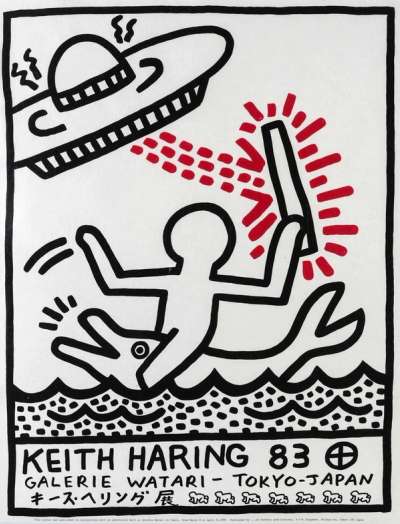
£800-£1,150
$1,550-$2,250 Value Indicator
$1,350-$1,950 Value Indicator
¥7,500-¥10,500 Value Indicator
€950-€1,350 Value Indicator
$8,000-$11,500 Value Indicator
¥150,000-¥220,000 Value Indicator
$1,000-$1,450 Value Indicator
TradingFloor
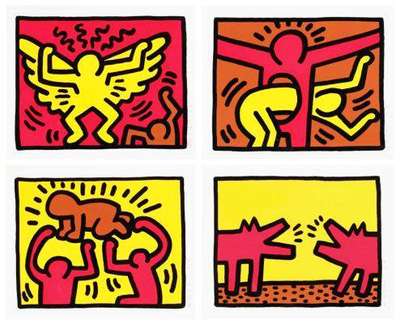
£70,000-£100,000
$140,000-$190,000 Value Indicator
$120,000-$170,000 Value Indicator
¥640,000-¥920,000 Value Indicator
€80,000-€120,000 Value Indicator
$700,000-$1,000,000 Value Indicator
¥13,230,000-¥18,890,000 Value Indicator
$90,000-$130,000 Value Indicator
TradingFloor
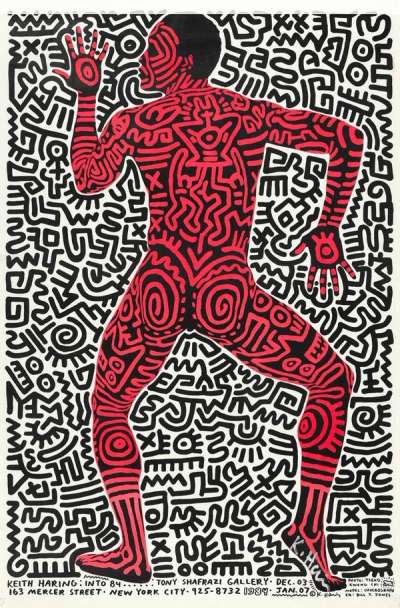
£1,800-£2,650
$3,500-$5,000 Value Indicator
$3,100-$4,550 Value Indicator
¥17,000-¥24,000 Value Indicator
€2,100-€3,100 Value Indicator
$18,000-$26,000 Value Indicator
¥340,000-¥500,000 Value Indicator
$2,300-$3,400 Value Indicator
TradingFloor
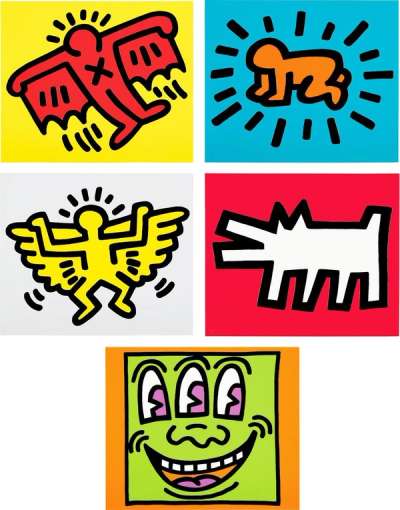
£90,000-£140,000
$170,000-$270,000 Value Indicator
$160,000-$240,000 Value Indicator
¥830,000-¥1,280,000 Value Indicator
€110,000-€160,000 Value Indicator
$900,000-$1,400,000 Value Indicator
¥17,000,000-¥26,450,000 Value Indicator
$110,000-$180,000 Value Indicator
TradingFloor
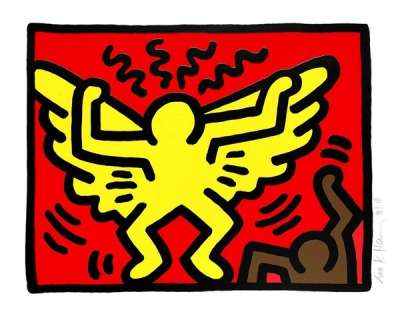
£21,000-£30,000
$40,000-$60,000 Value Indicator
$35,000-$50,000 Value Indicator
¥190,000-¥270,000 Value Indicator
€25,000-€35,000 Value Indicator
$210,000-$290,000 Value Indicator
¥4,000,000-¥5,710,000 Value Indicator
$26,000-$40,000 Value Indicator
TradingFloor
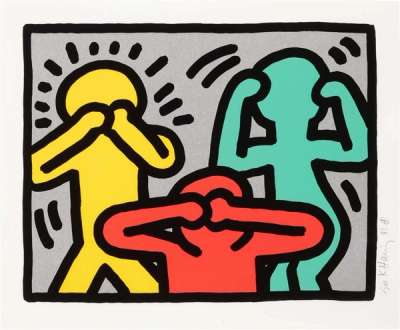
£28,000-£40,000
$50,000-$80,000 Value Indicator
$50,000-$70,000 Value Indicator
¥250,000-¥360,000 Value Indicator
€35,000-€45,000 Value Indicator
$270,000-$390,000 Value Indicator
¥5,330,000-¥7,610,000 Value Indicator
$35,000-$50,000 Value Indicator
TradingFloor
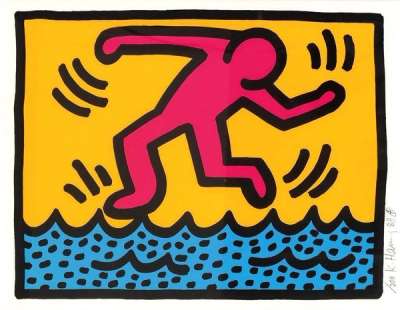
£26,000-£40,000
$50,000-$80,000 Value Indicator
$45,000-$70,000 Value Indicator
¥240,000-¥360,000 Value Indicator
€30,000-€45,000 Value Indicator
$260,000-$390,000 Value Indicator
¥4,970,000-¥7,640,000 Value Indicator
$35,000-$50,000 Value Indicator
TradingFloor
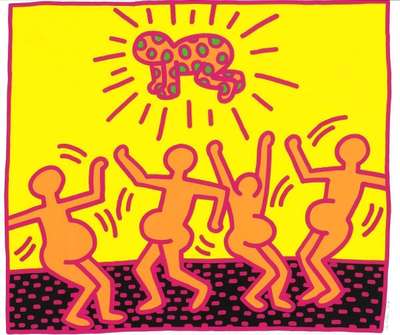
£45,000-£60,000
$90,000-$120,000 Value Indicator
$80,000-$100,000 Value Indicator
¥410,000-¥550,000 Value Indicator
€50,000-€70,000 Value Indicator
$450,000-$600,000 Value Indicator
¥8,500,000-¥11,340,000 Value Indicator
$60,000-$80,000 Value Indicator
TradingFloor
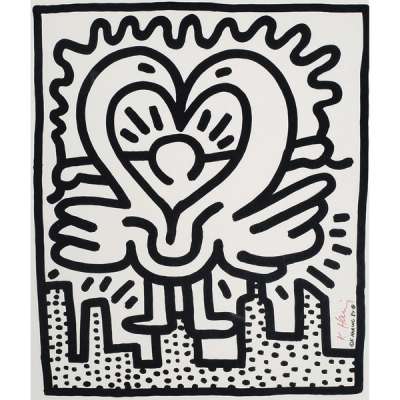
£3,000-£4,500
$6,000-$8,500 Value Indicator
$5,000-$7,500 Value Indicator
¥27,000-¥40,000 Value Indicator
€3,500-€5,500 Value Indicator
$29,000-$45,000 Value Indicator
¥570,000-¥860,000 Value Indicator
$3,750-$5,500 Value Indicator
TradingFloor
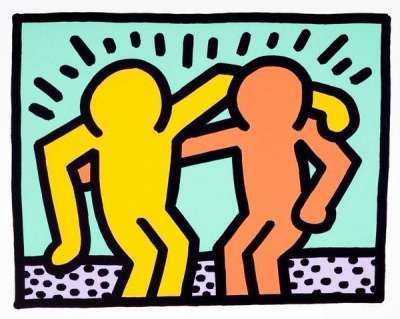
£26,000-£40,000
$50,000-$80,000 Value Indicator
$45,000-$70,000 Value Indicator
¥240,000-¥360,000 Value Indicator
€30,000-€45,000 Value Indicator
$260,000-$390,000 Value Indicator
¥4,950,000-¥7,610,000 Value Indicator
$35,000-$50,000 Value Indicator
TradingFloor
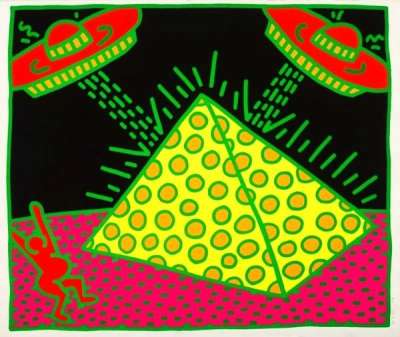
£40,000-£60,000
$80,000-$120,000 Value Indicator
$70,000-$100,000 Value Indicator
¥360,000-¥540,000 Value Indicator
€45,000-€70,000 Value Indicator
$390,000-$590,000 Value Indicator
¥7,610,000-¥11,420,000 Value Indicator
$50,000-$80,000 Value Indicator
TradingFloor
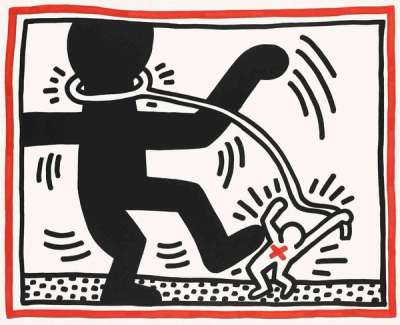
£16,000-£24,000
$30,000-$45,000 Value Indicator
$28,000-$40,000 Value Indicator
¥150,000-¥220,000 Value Indicator
€19,000-€28,000 Value Indicator
$160,000-$240,000 Value Indicator
¥3,020,000-¥4,530,000 Value Indicator
$20,000-$30,000 Value Indicator
TradingFloor
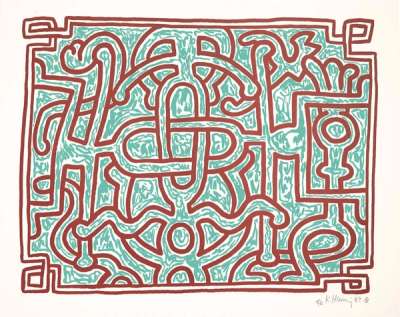
£17,000-£26,000
$35,000-$50,000 Value Indicator
$29,000-$45,000 Value Indicator
¥150,000-¥240,000 Value Indicator
€20,000-€30,000 Value Indicator
$170,000-$260,000 Value Indicator
¥3,240,000-¥4,950,000 Value Indicator
$21,000-$35,000 Value Indicator
TradingFloor
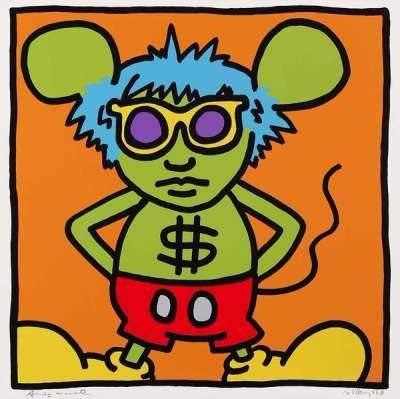
£160,000-£240,000
$310,000-$460,000 Value Indicator
$280,000-$410,000 Value Indicator
¥1,470,000-¥2,200,000 Value Indicator
€190,000-€280,000 Value Indicator
$1,600,000-$2,390,000 Value Indicator
¥30,230,000-¥45,340,000 Value Indicator
$200,000-$310,000 Value Indicator
TradingFloor
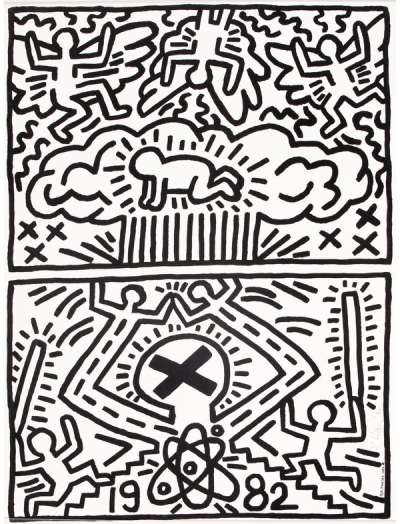
£1,300-£2,000
$2,500-$3,850 Value Indicator
$2,250-$3,450 Value Indicator
¥12,000-¥18,000 Value Indicator
€1,500-€2,350 Value Indicator
$13,000-$20,000 Value Indicator
¥250,000-¥380,000 Value Indicator
$1,650-$2,550 Value Indicator
TradingFloor
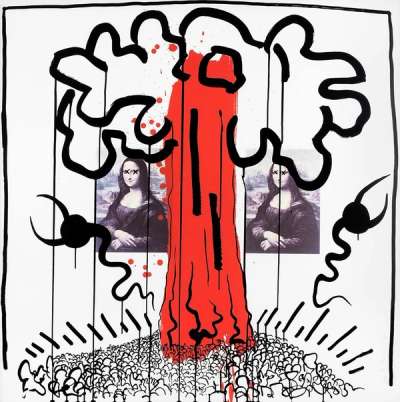
£8,500-£13,000
$16,000-$25,000 Value Indicator
$14,500-$22,000 Value Indicator
¥80,000-¥120,000 Value Indicator
€10,000-€15,000 Value Indicator
$80,000-$130,000 Value Indicator
¥1,610,000-¥2,460,000 Value Indicator
$11,000-$17,000 Value Indicator
TradingFloor
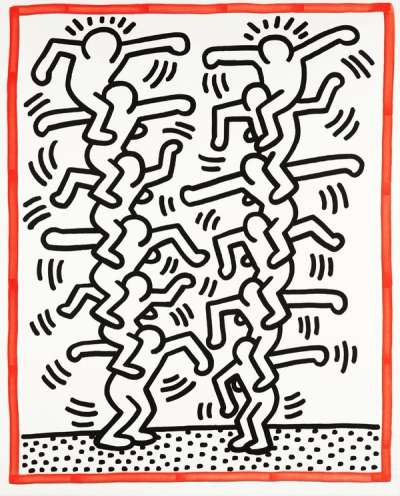
£60,000-£90,000
$120,000-$170,000 Value Indicator
$100,000-$150,000 Value Indicator
¥540,000-¥820,000 Value Indicator
€70,000-€110,000 Value Indicator
$590,000-$880,000 Value Indicator
¥11,420,000-¥17,130,000 Value Indicator
$80,000-$110,000 Value Indicator
TradingFloor
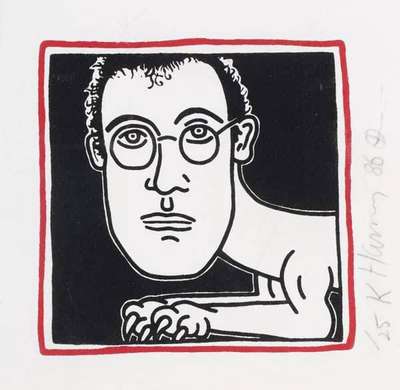
£13,500-£20,000
$26,000-$40,000 Value Indicator
$23,000-$35,000 Value Indicator
¥120,000-¥180,000 Value Indicator
€16,000-€23,000 Value Indicator
$130,000-$200,000 Value Indicator
¥2,570,000-¥3,810,000 Value Indicator
$17,000-$25,000 Value Indicator
TradingFloor
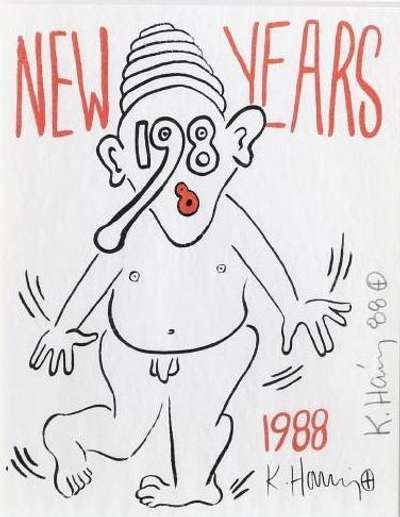
£3,800-£5,500
$7,500-$10,500 Value Indicator
$6,500-$9,500 Value Indicator
¥35,000-¥50,000 Value Indicator
€4,450-€6,500 Value Indicator
$40,000-$50,000 Value Indicator
¥730,000-¥1,050,000 Value Indicator
$4,850-$7,000 Value Indicator
TradingFloor
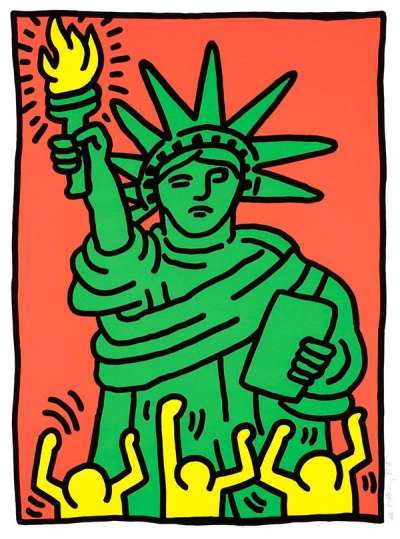
£50,000-£80,000
$100,000-$160,000 Value Indicator
$90,000-$140,000 Value Indicator
¥460,000-¥730,000 Value Indicator
€60,000-€90,000 Value Indicator
$500,000-$800,000 Value Indicator
¥9,540,000-¥15,270,000 Value Indicator
$60,000-$100,000 Value Indicator
TradingFloor
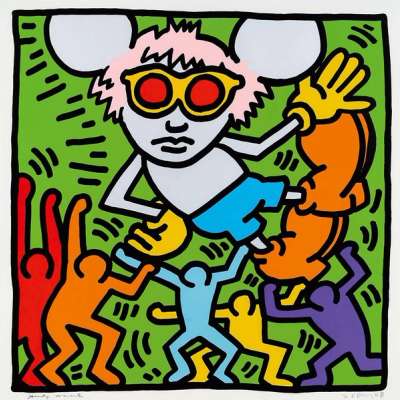
£190,000-£280,000
$370,000-$540,000 Value Indicator
$330,000-$480,000 Value Indicator
¥1,740,000-¥2,570,000 Value Indicator
€220,000-€330,000 Value Indicator
$1,890,000-$2,790,000 Value Indicator
¥35,900,000-¥52,900,000 Value Indicator
$240,000-$360,000 Value Indicator
TradingFloor
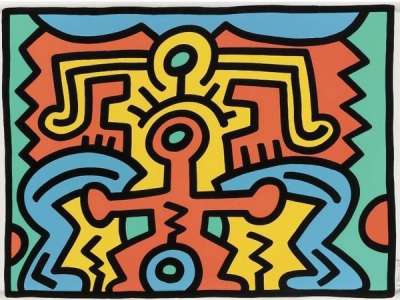
£27,000-£40,000
$50,000-$80,000 Value Indicator
$45,000-$70,000 Value Indicator
¥240,000-¥360,000 Value Indicator
€30,000-€45,000 Value Indicator
$270,000-$390,000 Value Indicator
¥5,140,000-¥7,610,000 Value Indicator
$35,000-$50,000 Value Indicator
TradingFloor
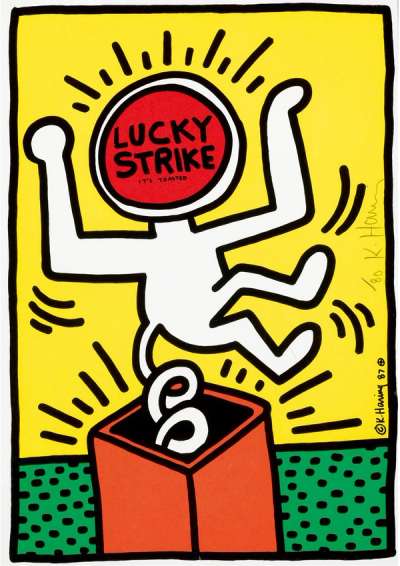
£11,000-£16,000
$21,000-$30,000 Value Indicator
$19,000-$27,000 Value Indicator
¥100,000-¥150,000 Value Indicator
€13,000-€19,000 Value Indicator
$110,000-$160,000 Value Indicator
¥2,090,000-¥3,050,000 Value Indicator
$14,000-$20,000 Value Indicator
TradingFloor
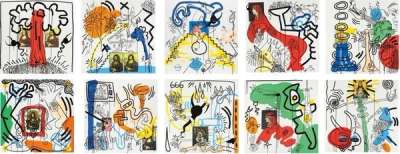
£80,000-£120,000
$150,000-$230,000 Value Indicator
$140,000-$210,000 Value Indicator
¥730,000-¥1,090,000 Value Indicator
€90,000-€140,000 Value Indicator
$790,000-$1,190,000 Value Indicator
¥15,310,000-¥22,970,000 Value Indicator
$100,000-$150,000 Value Indicator
TradingFloor
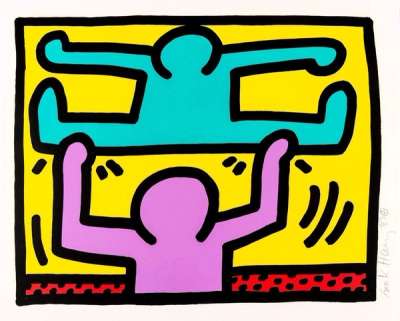
£18,000-£27,000
$35,000-$50,000 Value Indicator
$30,000-$45,000 Value Indicator
¥160,000-¥240,000 Value Indicator
€21,000-€30,000 Value Indicator
$180,000-$270,000 Value Indicator
¥3,430,000-¥5,140,000 Value Indicator
$23,000-$35,000 Value Indicator
TradingFloor
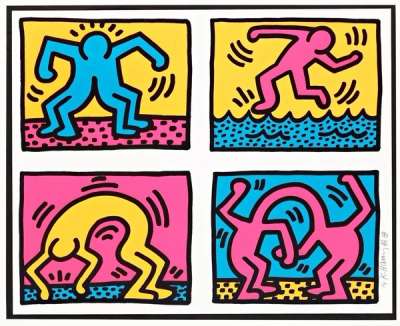
£45,000-£70,000
$90,000-$140,000 Value Indicator
$80,000-$120,000 Value Indicator
¥410,000-¥640,000 Value Indicator
€50,000-€80,000 Value Indicator
$450,000-$700,000 Value Indicator
¥8,500,000-¥13,230,000 Value Indicator
$60,000-$90,000 Value Indicator
TradingFloor
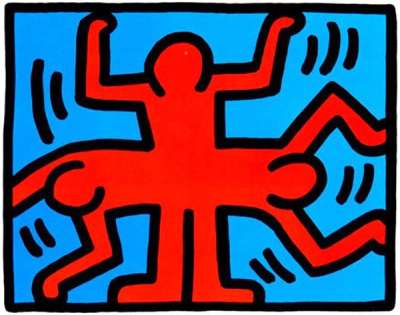
£13,500-£21,000
$26,000-$40,000 Value Indicator
$23,000-$35,000 Value Indicator
¥120,000-¥190,000 Value Indicator
€16,000-€25,000 Value Indicator
$130,000-$210,000 Value Indicator
¥2,550,000-¥3,970,000 Value Indicator
$17,000-$27,000 Value Indicator
TradingFloor
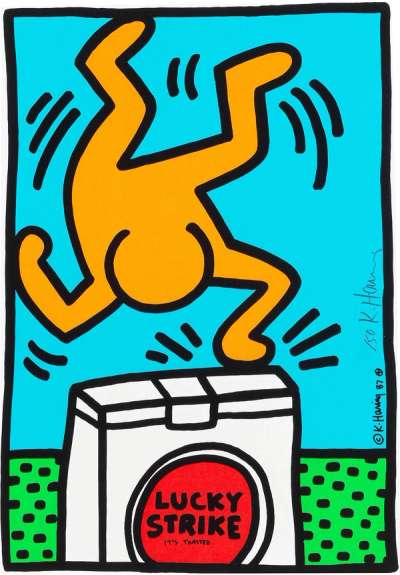
£20,000-£29,000
$40,000-$60,000 Value Indicator
$35,000-$50,000 Value Indicator
¥180,000-¥260,000 Value Indicator
€23,000-€35,000 Value Indicator
$200,000-$280,000 Value Indicator
¥3,810,000-¥5,520,000 Value Indicator
$25,000-$35,000 Value Indicator
TradingFloor
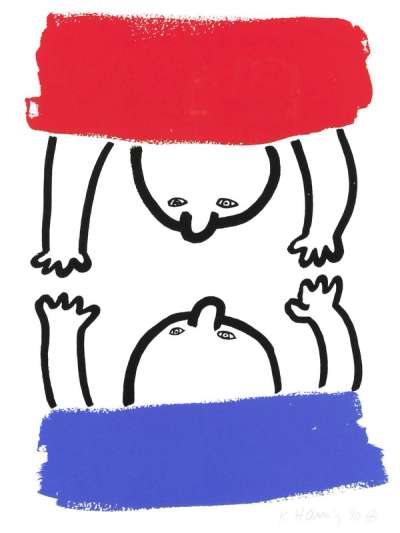
£4,450-£6,500
$8,500-$12,500 Value Indicator
$7,500-$11,000 Value Indicator
¥40,000-¥60,000 Value Indicator
€5,000-€7,500 Value Indicator
$45,000-$60,000 Value Indicator
¥840,000-¥1,230,000 Value Indicator
$5,500-$8,500 Value Indicator
TradingFloor
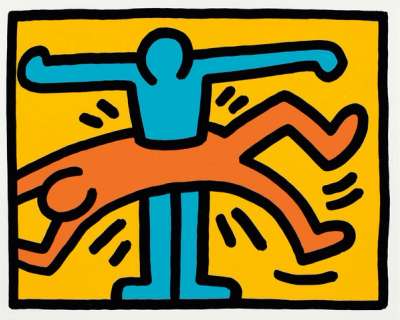
£13,500-£20,000
$26,000-$40,000 Value Indicator
$23,000-$35,000 Value Indicator
¥120,000-¥180,000 Value Indicator
€16,000-€23,000 Value Indicator
$130,000-$200,000 Value Indicator
¥2,550,000-¥3,780,000 Value Indicator
$17,000-$25,000 Value Indicator
TradingFloor
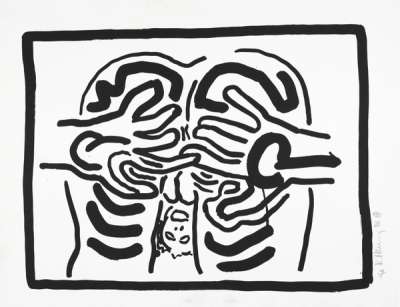
£2,450-£3,700
$4,750-$7,000 Value Indicator
$4,200-$6,500 Value Indicator
¥22,000-¥35,000 Value Indicator
€2,850-€4,350 Value Indicator
$24,000-$35,000 Value Indicator
¥460,000-¥700,000 Value Indicator
$3,100-$4,700 Value Indicator
TradingFloor
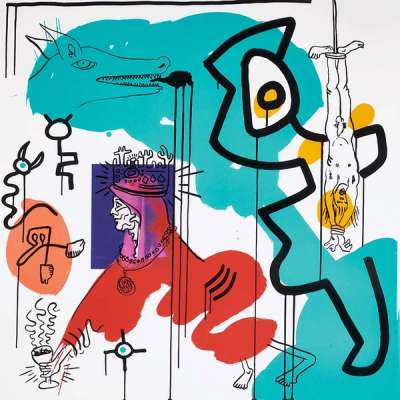
£6,000-£9,000
$11,500-$17,000 Value Indicator
$10,500-$16,000 Value Indicator
¥60,000-¥80,000 Value Indicator
€7,000-€10,500 Value Indicator
$60,000-$90,000 Value Indicator
¥1,130,000-¥1,700,000 Value Indicator
$7,500-$11,500 Value Indicator
TradingFloor
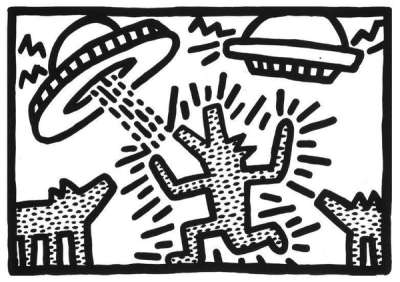
£28,000-£40,000
$50,000-$80,000 Value Indicator
$50,000-$70,000 Value Indicator
¥260,000-¥370,000 Value Indicator
€35,000-€45,000 Value Indicator
$280,000-$400,000 Value Indicator
¥5,290,000-¥7,560,000 Value Indicator
$35,000-$50,000 Value Indicator
TradingFloor
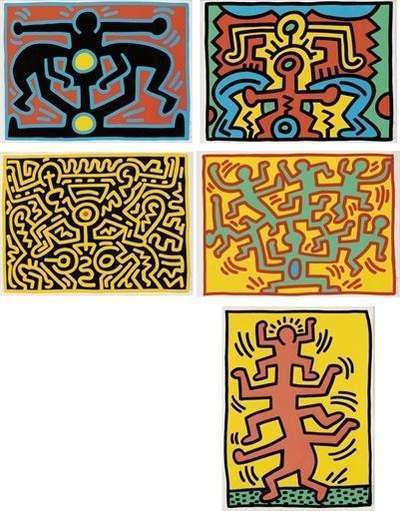
£260,000-£400,000
$500,000-$770,000 Value Indicator
$450,000-$690,000 Value Indicator
¥2,380,000-¥3,670,000 Value Indicator
€300,000-€470,000 Value Indicator
$2,590,000-$3,990,000 Value Indicator
¥49,120,000-¥75,570,000 Value Indicator
$330,000-$510,000 Value Indicator
TradingFloor
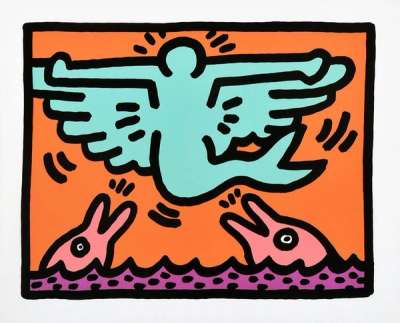
£17,000-£26,000
$35,000-$50,000 Value Indicator
$29,000-$45,000 Value Indicator
¥150,000-¥240,000 Value Indicator
€20,000-€30,000 Value Indicator
$170,000-$260,000 Value Indicator
¥3,240,000-¥4,950,000 Value Indicator
$21,000-$35,000 Value Indicator
TradingFloor
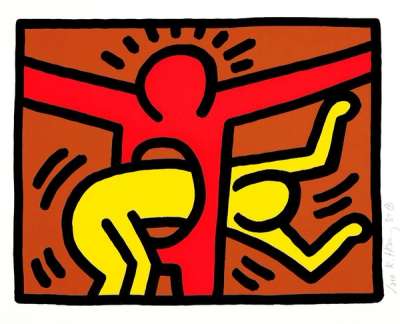
£14,000-£21,000
$27,000-$40,000 Value Indicator
$24,000-$35,000 Value Indicator
¥130,000-¥190,000 Value Indicator
€16,000-€25,000 Value Indicator
$140,000-$210,000 Value Indicator
¥2,660,000-¥4,000,000 Value Indicator
$18,000-$26,000 Value Indicator
TradingFloor
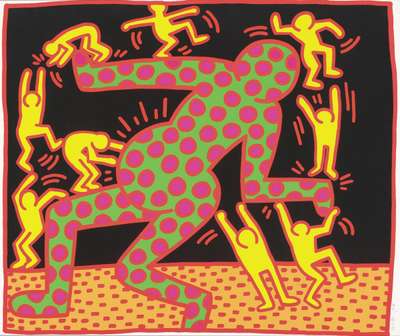
£40,000-£60,000
$80,000-$120,000 Value Indicator
$70,000-$100,000 Value Indicator
¥370,000-¥550,000 Value Indicator
€45,000-€70,000 Value Indicator
$400,000-$600,000 Value Indicator
¥7,560,000-¥11,340,000 Value Indicator
$50,000-$80,000 Value Indicator
TradingFloor
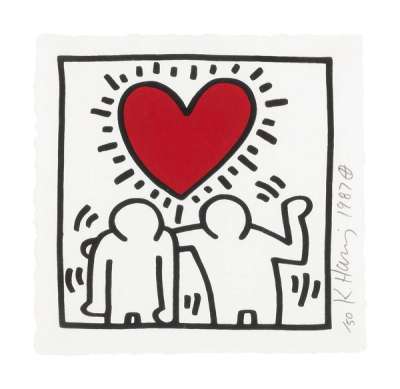
£28,000-£40,000
$50,000-$80,000 Value Indicator
$50,000-$70,000 Value Indicator
¥260,000-¥370,000 Value Indicator
€35,000-€45,000 Value Indicator
$280,000-$400,000 Value Indicator
¥5,290,000-¥7,560,000 Value Indicator
$35,000-$50,000 Value Indicator
TradingFloor
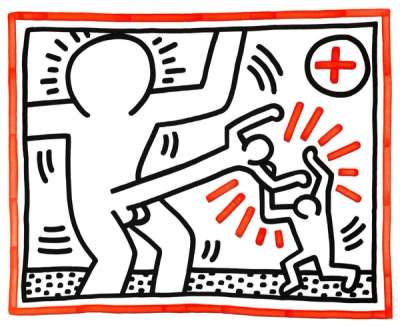
£13,500-£20,000
$26,000-$40,000 Value Indicator
$23,000-$35,000 Value Indicator
¥120,000-¥180,000 Value Indicator
€16,000-€23,000 Value Indicator
$130,000-$200,000 Value Indicator
¥2,580,000-¥3,820,000 Value Indicator
$17,000-$25,000 Value Indicator
TradingFloor
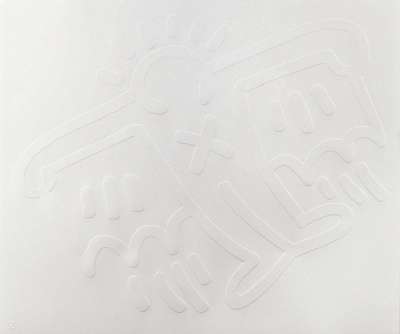
£7,000-£10,500
$13,500-$20,000 Value Indicator
$12,000-$18,000 Value Indicator
¥60,000-¥100,000 Value Indicator
€8,000-€12,500 Value Indicator
$70,000-$100,000 Value Indicator
¥1,330,000-¥2,000,000 Value Indicator
$9,000-$13,000 Value Indicator
TradingFloor
Sell Your Art
with Us
with Us
Join Our Network of Collectors. Buy, Sell and Track Demand
Biography
Adored New York activist and artist, Keith Haring is one of the most influential names in Contemporary Art. Famed for his colourful and playful pop-graffiti, and for his socially engaged art – particularly in the context of AIDS activism – Haring believed that 'art is life, and life is art'.
Born in Pennsylvania in 1958, Keith Haring found his love of drawing at a young age through popular cartoons like Walt Disney and Dr Seuss, and moved to New York City in 1978 to study at the School of Visual Arts. From 1980, Haring began to create hundreds of drawings in New York’s streets and subways, calling these spaces his 'laboratory'. It was here that he developed some of the key motifs that defined his art, like his Radiant Baby, which he considered as an image of 'the purest and most positive experience of human existence', and his heart icons and dancing figures, which he used throughout his later works.
In 1982, Haring joined the Tony Shafrazi Gallery and decided to dedicate his life to art. He was soon invited to participate in numerous solo and group exhibitions and became known for his street art style. By the mid-80s, Haring was exhibiting in international biennials and even designed a billboard for Times Square, an advertising campaign for Absolut Vodka and a Swatch watch, as well as painting murals all over the world.
Today, Haring is perhaps best recognised for the active role he played within AIDS activism. Seeing the LGBTQ+ community devastated by the epidemic, and himself diagnosed with AIDS in 1988, Haring used his art to raise awareness about the topic through works like his famous Ignorance = Fear. The works he created often featured the pink triangle image, a symbol reclaimed by the LGBTQ+ rights movement after being used during the Holocaust to mark those being targeted for homosexuality.
Another important aspect of Haring’s art has been his Pop Shop prints. These whimsical images were inspired by the artist’s commitment to making art accessible to all audiences. He opened Pop Shops in New York and in Japan and sold a range of t-shirts, badges, magnets and prints, starting at as little as 50 cents. While the project was praised by friends such as Andy Warhol, Pop Shop was snubbed by many leading art world figures who placed more value on original works of art.
Speaking of the importance of his Pop Shops, Haring said, 'My shop is an extension of what I was doing in the subway stations, breaking down the barriers between high and low art.'
